KellyBagdanov.com
- Art History

Georges De La Tour’s Magdalene and the Smoking Flame
- February 28, 2021
- by Kelly Bagdanov
Georges de La Tour’s, Magdalene with the Smoking Flame, is a French Baroque work that envisions Mary Magdalene in a state of deep contemplation. With clarity of form, and a limited color palette, De La Tour creates a forceful work that captures this quiet moment. In this post we will explore the composite character that was Mary Magdalene during the Middle Ages and the Renaissance.

Who was De La Tour?
Georges De La Tour was a French Baroque painter who worked during the first half of the 1600’s. He was noted for his use of light and moving religious works. Heavily influenced by Caravaggio, De la Tour combined Caravaggio’s use of light with simplified forms that eliminated extraneous details, and concentrated the focus of the viewer on the indispensable details of his story.
While De La Tour would eventually become the painter to the King, the bulk of his work was bought by the wealthy bourgeoisie. Painting, with this audience in mind, likely explains why there are multiple versions of the painting we are going to look at today.

Why did De La Tour paint so many Mary Magdalenes?
In France, during the 1600’s Mary Magdalene was one of the most popular saints, and the fascination with her life appeared to be insatiable. Mary Magdalene’s early story of sexual promiscuity and worldly pursuits was fertile ground for the artistic imagination.
Then, her conversion and renunciation of that early life, layered on a spiritual lesson that justified the innumerable paintings she has been featured in. Always beautiful, hair falling down, shoulders bared, Mary is pictured penitent and remorseful. She was the saint artists loved to portray.
Mary was also popular because she was relatable. Many of the stories of saints are filled with such self-sacrifice and courage that we cannot imagine being them. But Mary Magdalene, well, she is relatable, and her story provides comfort and hope.
Not only did Jesus forgive Mary of her past, she became an integral part of the group that traveled with him. She is frequently mentioned in the company of the Virgin Mary, and was given the title, “apostle to the apostles.” Surely, if her life could be redeemed, there is hope for the rest of us.
And so, De La Tour began making his paintings of the penitent Magdalene. We do not know if he had specific commissions for these canvases, if they just sold well so he continued to paint them, or if Mary Magdalene was a favorite of his.
Whatever the reason, the series of paintings on this topic are striking. I’ve chosen to focus on The Magdalene with the Smoking Flame , but as you will see, these other two Magdalene’s vary in only a few details.
Historical context of the De La Tour’s Magdalenes

De La Tour’s Magdalene’s were painted during the counter-reformation. The Reformation (1517-1648) was a period of religious upheaval and reform which saw the Catholic church splintering. A variety of groups formed, that rejected various elements of Catholic practice and doctrine. As religion and governments were closely tied, wars and political struggles ensued. The Catholic Church recognized that reforms were needed and a period of Catholic Revival followed.
During this period, the Catholic Church enacted a collection of reforms and began a publicity campaign to reassert the doctrines that were under attack by the Reformers.
Art and the Reformation
One area that was contested, by each group, was the role that art played in religious life. Protestants largely renounced religious art, feeling it promoted idolatry. This belief resulted in periods of iconoclasm, or the destruction of religious imagery. In particular, Protestants objected to the portrayals of the saints and the Virgin Mary.
In response to these Protestant “cleansings,” Catholic leaders doubled down, and invested heavily in art. They skillfully used art as a powerful tool to reinforce their doctrinal distinctives.
Artists thrived in the Catholic regions of Europe. In the largely Protestant areas of the North, artists instead explored new areas of expression, including genre paintings, portraits, and landscapes.
Reformation churches, particularly Lutherans, did not eliminate all art, but what was acceptable was limited.
Mary Magdalene was popular with both groups
Interestingly, Mary Magdalene was popular in both camps. Catholics loved Mary Magdalene for a variety of reasons. First, Catholics embraced the legends of the Saints and used their stories as didactic tools to help inform their followers about holy living. Secondly, Mary was held up as a defender of Roman Catholic sacraments, which were under attack by the Reformers.
On the other side, Protestants, looking to down play the importance of the Virgin Mary, had, perhaps unintentionally, played up the story of Mary Magdalene. Because Mary was called the “apostle to the apostles,” Reformers felt she embodied their doctrine of the priesthood of all believers. Her title, “apostle to the apostles,” was given to her because she was the first to see Christ after the Resurrection, and then carried the good news to the other disciples.
In Catholic theology the priests play the critical role of administering the sacraments, essentially they serve as intermediary between God and man. Protestants rejected the need for this go-between and declared that all believers act as priests and can approach God directly. Mary Magdalene was a clear example of this belief.
Understanding De La Tour’s Mary Magdalene
De La Tour was painting during the 1600’s when the popularity of Mary Magdalene was quite high. Living in France, a Catholic area, De La Tour embraced the Catholic vision of Mary Magdalene and the need to strengthen the churches core teachings.
E Book coming soon
As I researched Mary Magdalene, I discovered that the composite figure that was understood by artists like De La Tour was actually quite complicated. I collected the various stories, and an amazing collection of Mary Magdalene art, and decided to write an e-book about what I’ve discovered. If you are subscribed to my blog or YouTube channel you will be notified when the e-book is available.
But today I will just include what is pertinent to this painting.
Mary Magdalene became a composite character
The Mary Magdalene of the Middle Ages and Renaissance was a composite character. This means that Mary’s narrative is a blending together of several women to create one story.
De La Tour’s Magdalene references several of these different sources, so let’s explore the many characters that contributed to the Renaissance version of Mary Magdalene.
The Anointing Mary

Mary Magdalene is mentioned, by name, 12 times in the New Testament. From these stories we know that she was healed by Jesus of 7 demons, and that she financially supported Christ’s ministry. We know that she traveled with Jesus and the disciples in the company of the Virgin Mary, and several other women.
Mary Magdalene was also believed to be the harlot who washed Christ feet while he was at a dinner party. We will note that the harlot of the story is never named, and yet ,this becomes the defining story of Mary Magdalene.
This woman, repenting of her poor choices, washed Jesus’ feet with her tears, wiped them with her hair, and anointed his feet with oil.
As a prostitute, Mary was frequently painted as a penitent. De La Tour’s Magdalene embraces this interpretation, and the artist uses her demeanor and other visual clues, to remind the viewer of Mary’s genuine repentance and God’s grace.
This anointing story gave rise to the most significant iconography of Mary Magdalene, a jar of ointment. When there is a group of women in a Biblical scene, we can identify Mary by her jar.
The Contemplative Mary

This is just one story of Christ being anointed with oil, there are three others. Mary Magdalene quickly became identified with all of them.
In one story, theologians determined that Mary, the sister of Martha and Lazarus, was also Mary Magdalene. In this story the woman anoints Jesus head as if for burial. This combining of Mary Magdalene with Mary the sister of Martha, gave rise to the idea that Mary lived a contemplative life, in contrast to her sister who lived an active life.
During this time period there was a belief that people fell into one camp or the other. In the story of Martha and Mary we have Martha bustling about getting ready to serve dinner, and Mary seated at the feet of Jesus listening to his teaching. When Martha complains that she isn’t helping, Jesus defends Mary saying that she has chosen the better path. It is this idea of the contemplative Mary, or the one sitting at Christ’s feet to learn from him, that De La Tour’s portrays for us.
The Faithful Mary

Mary was also present at the crucifixion. When the other disciples fled, she stayed. Her faithfulness in this moment is one of the attributes of her character that is most praised. She is steadfast and loyal no matter the circumstance. De La Tour gives this part of Mary’s story a nod by including a cross on the table.
The Witness Mary
We also know from the gospels that Mary Magdalene was the first person Christ revealed himself to after his resurrection. At that appearance, Christ instructed Mary to carry word of his resurrection to the other disciples. This made Mary Magdalene the first to declare the gospel, that Christ had risen from the dead. Her role in bringing the good news to the other disciples is why she is called the “apostle to the apostles.”
The Evangelist Mary
Legend has it, that Mary Magdalene, with other believers, during the persecution of the early Christians, was put into a rudderless boat and pushed out into the Mediterranean sea to die of exposure and starvation. Miraculously, the boats were guided to the shore of Provence in France, and this is where Mary lived out the rest of her life. Having been saved by Christ, both spiritually from her early sinful life and now physically, Mary set out to spread the gospel in France. This is how France was converted to Christianity, and why Mary Magdalene is the patron saint of Provence.
Reading De La Tour’s Magdalene
Light and form.
As I’ve noted above, what De La Tour was particularly known for was his use of light. A dark room and a single source of light is used to focus the attention. As we examine this painting we can see an excellent example of this. When we examine the work closely, the most striking example of the artist use of light is the luminosity of the Magdalene’s sleeves. With light pinks, and brighter whites, De La tour creates an amazing effect of the light shining through the gauzy fabric. It’s a lovely detail that shows his absolute mastery and understanding of how light works.
Along with the hauntingly beautiful use of light, De La Tour simplifies his forms and limits his palette creating a quiet calm. This calm, controlled picture doesn’t jump out of the canvas toward us, as so many Baroque works do, instead the space invites us in. Mary is closed into herself, unaware we are observing her, and this creates in us the desire to be still and not disturb her.
Unusually, De La Tour’s Magdalene and the Smoking Flame uses an oil lamp, as opposed to a candle as the source of light. The lamp illuminates a still life on the table that gives us more information about the woman we are observing. There is smoke rising from the flame in two curling columns. Generally, flames represent the presence of God, and as we see the Magdalene in an attitude of contemplation we can assume that part of her thoughts are on God’s presence with her.
The Still Life
Also on the table are a stack of books, which indicates this is an intellectual woman who possesses a depth of understanding and curiosity. The books add to the serious note of Mary’s reflections. In front of the books is a cross. Lying flat on the table, the cross could easily be missed, but again, the cross reminds of Mary’s role during the crucifixion and resurrection. Lying on top of the cross is a whip, a gathering of leather cords that were used to beat oneself in penance for sin.
Mary’s Appearance
While not being obvious, the iconography used to identify Mary Magdalene is evident here. De La tour has painted the Magdalene in red, a reminder to the viewer of her past occupation. The term scarlet woman originates in the book of Revelation, with the whore of Babylon, also called the Mother of Whores. It is unlikely that the historical Mary Magdalene is the same woman who anointed Christ feet, or that she was a prostitute, however she will be remembered throughout history as one, and the iconography, like a red dress, will keep that understanding of her story alive.
Along with the red clothing we have her top falling off of her shoulders, a further indication of her ‘loose’ past. Her hair falls down her back, an indication to men that she was available, as women only let their hair down in front of their husbands. To be fair, this is not just an indication of her moral state, but also done because, according to legend, after she used her hair to wipe her tears from Christ feet she never cut it again.
While we may see a skull as a bit morbid, and perhaps as an unhealthy preoccupation with death, that is not how it was interpreted in religious art. A skull is a vivid reminder of our mortality, and when we realize our time is limited, we become more focused on what is truly important. Our purpose in life is clarified when viewed through the lens of death, and we are encouraged to not waste a single hour on the vanities of life, but to pursue those things that “rust and moth cannot destroy.”
In Mary Magdalene’s case, she has renounced riches and earthly pleasure and instead is focused on the mission of spreading the gospel. She is “living in the light of eternity.” Rather than a morbid reminder of death, the skull is a testament that Mary has chosen to live her life “in the light of eternity,” and that demonstrates her wisdom.
Mary Pregnant?
The last part of Mary Magdalene’s story that I believe De La Tour is referencing in this painting is a bit more controversial, and you will have to decide if you agree with me or not. I personally find the concept of a metaphorical pregnancy rich with meaning and themes to be explored.
Some suggest Mary Magdalene has been painted pregnant, not just in this work, but in many. This is not some Dan Brown conspiracy that Mary bore Jesus a love child, but is meant to be interpreted metaphorically. The use of marriage and childbirth imagery to explain God’s relationship with his people is not new, it is where we get the term “born again.” The idea is that Mary carried the good news of Christ’s saving message and when she arrived in France she delivered, giving new life to the people there.
Concluding thoughts
I have serious problem’s with the way the historical Mary’s story was co-opted and transformed into this sensational, sexualized, fantasy Mary. Likely Mary Magdalene was actually a respected member of her community with financial means to support Christ’s ministry. She is a constant companion of the Virgin Mary and is included with the disciples at the critical moments of Christ’s ministry. The low view of women held during the middle ages obviously played a large part in how the composite character of Mary developed, and her story reveals the clergy’s prejudices.
That said, there is a richness and complexity to Mary Magdalene, as she was understood during the Renaissance, that the other women of the Bible lack. She is multi-layered and has a depth of development that few women of the Bible receive.
Historical accuracies aside, this painting leaves us with a lot to contemplate.
Subscribe to KellyBagdanov
Join a generous group of people who help me continue to serve teachers and lovers of art. Click the button below and become a patron!
JMW Turner’s The Slave Ship
Hidden meanings in robert campin’s merode altarpiece, why study art history, raphael the resurrection of christ, affiliate disclosure.
Disclosure: Some of the links on this site are affiliate links, meaning, at no cost to you, I will earn a commission if you click through and make a purchase.

Download Your Free Curriculum
The grand tour art history curriculum.
Compare 4 works of art from the Italian Renaissance with 4 works from the Byzantine era to begin building the framework we will build on in future lessons. This download will introduce you to the overview portion of the Grand Tour Art History Curriculum and will add your email to our subscription list.
More Articles

Botticelli’s Venus and Mars Explained
Botticelli’s Venus and Mars is both beautiful and humorous. Mischievous satyrs, clear bright colors, hidden symbols, and missing legs all deserve a closer look so let’s get started. Botticelli’s paintings of mythological stories are among his most famous. Botticelli’s Venus and Mars is telling the story of the illicit love affair between Venus and Mars.

Backstory of Durer’s Rhinoceros
In this post we will explore the backstory of Durer’s Rhinoceros print. Albrecht Durer’s Rhinoceros is one of the most famous prints to ever be made. The print is based on the real life rhinoceros, Genda. Here is her story. Genda, The Gift That Keeps Giving In 1515, an Indian rhinoceros was gifted by Sultan

Color Crash Course – Part 1
Quick color crash course. A color crash course is necessary because color is one of the foundations of art, and so we need a basic understanding of color theory. For thousands of years artist and craftsmen have been passing down their knowledge of color and how to use it effectively. In the 1660’s Isaac Newton
You must be logged in to post a comment.
- The Collection
- The American Wing Ancient Near Eastern Art Arms and Armor The Michael C. Rockefeller Wing Asian Art The Cloisters The Costume Institute Drawings and Prints Egyptian Art European Paintings European Sculpture and Decorative Arts Greek and Roman Art Islamic Art Robert Lehman Collection The Libraries Medieval Art Musical Instruments Photographs Antonio Ratti Textile Center Modern and Contemporary Art
Crop your artwork:
Scan your QR code:
Gratefully built with ACNLPatternTool
The Penitent Magdalen
Georges de La Tour French
On view at The Met Fifth Avenue in Gallery 622
With its extreme contrasts of candlelight and shadow, pared-down geometry, and meditative mood, this painting exemplifies La Tour’s painting at its most accomplished and characteristic. These visual qualities were a powerful countertrend to Baroque painting’s typical pomp and showiness. A native of the duchy of Lorraine in eastern present-day France, La Tour was indebted to Caravaggesque painting, but tended toward even more simplified forms. The quiet atmosphere of this painting perfectly fits the subject, Mary Magdalen, who renounced the pleasures of the flesh for a life of penance and contemplation. She is shown with a mirror, symbol of vanity; a skull, emblem of mortality; and a candle that probably references her spiritual enlightenment.
Due to rights restrictions, this image cannot be enlarged, viewed at full screen, or downloaded.
Open Access
As part of the Met's Open Access policy , you can freely copy, modify and distribute this image, even for commercial purposes.
Public domain data for this object can also be accessed using the Met's Open Access API .
- https://www.metmuseum.org/art/collection/search/436839 https://www.metmuseum.org/art/collection/search/436839 Link copied to clipboard
- Animal Crossing
- Download image
- Enlarge image
Artwork Details
Use your arrow keys to navigate the tabs below, and your tab key to choose an item
Title: The Penitent Magdalen
Artist: Georges de La Tour (French, Vic-sur-Seille 1593–1652 Lunéville)
Date: ca. 1640
Medium: Oil on canvas
Dimensions: 52 1/2 x 40 1/4 in. (133.4 x 102.2 cm)
Classification: Paintings
Credit Line: Gift of Mr. and Mrs. Charles Wrightsman, 1978
Accession Number: 1978.517
Learn more about this artwork
Peter hristoff on reading symbols in art.
Artist in Residence Peter Hristoff meditates on the use of symbols in art as a means of communicating information about the artist, culture, time period, and even ourselves.
Reflections: Charles Le Brun's Mirrored Presence in the Jabach Portrait
Keith Christiansen discusses the presence of Charles Le Brun in his portrait of the banker Everhard Jabach and his family.
Timeline of Art History
France, 1600-1800 a.d., museum publications.
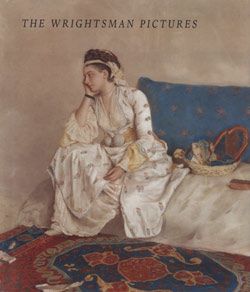
The Wrightsman Pictures
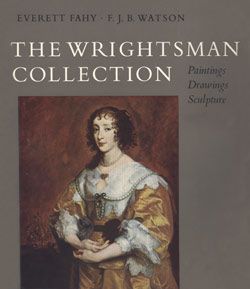
The Wrightsman Collection. Vol. 5, Paintings, Drawings, and Sculpture
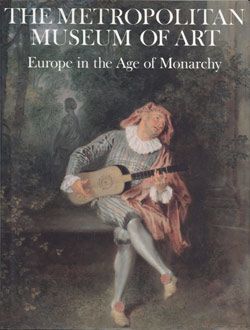
The Metropolitan Museum of Art. Vol. 6, Europe in the Age of Monarchy
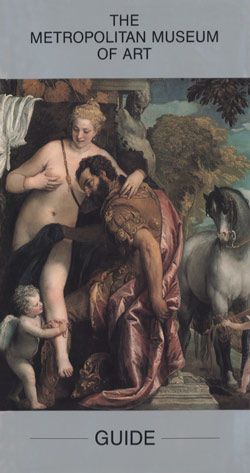
The Metropolitan Museum of Art Guide
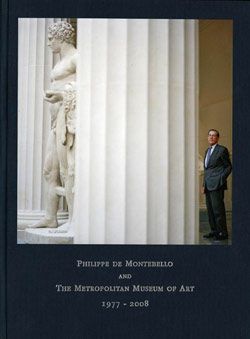
Philippe de Montebello and The Metropolitan Museum of Art, 1977–2008
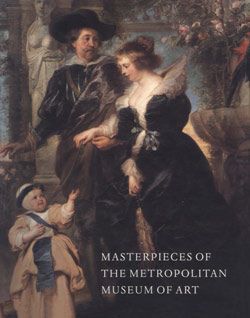
Masterpieces of The Metropolitan Museum of Art
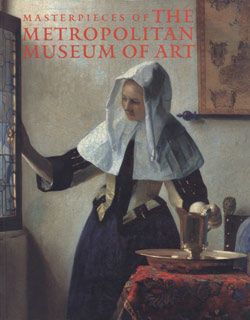
Looking to Connect with European Paintings: Visual Approaches for Teaching in the Galleries
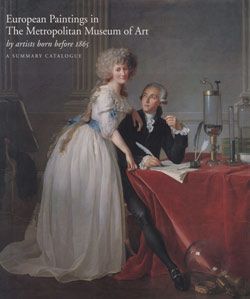
European Paintings in The Metropolitan Museum of Art by Artists Born before 1865: A Summary Catalogue
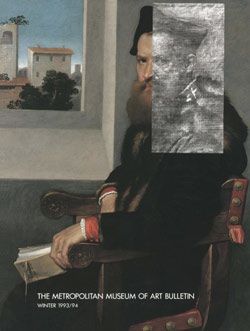
"The Changing Image: Studies in Paintings Conservation"
Related artworks.
- All Related Artworks
- In the same gallery
- By Georges de La Tour
- European Paintings
- From Europe
- From France
- From A.D. 1600–1800
The Fortune-Teller
The Trojan Women Setting Fire to Their Fleet
Soap Bubbles
The Jabach Family
Resources for research.
The Met's Libraries and Research Centers provide unparalleled resources for research and welcome an international community of students and scholars.
The Met Collection API is where all makers, creators, researchers, and dreamers can connect to the most up-to-date data and public domain images for The Met collection. Open Access data and public domain images are available for unrestricted commercial and noncommercial use without permission or fee.
We continue to research and examine historical and cultural context for objects in The Met collection. If you have comments or questions about this object record, please complete and submit this form . The Museum looks forward to receiving your comments.
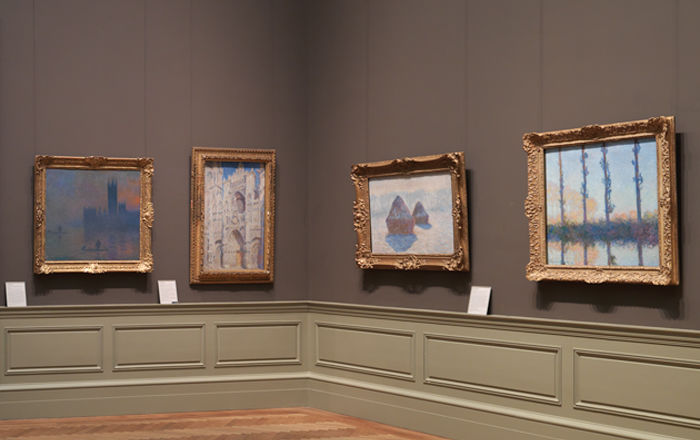
European Paintings at The Met

Search form
From the Collection: The Magdalen with the Smoking Flame
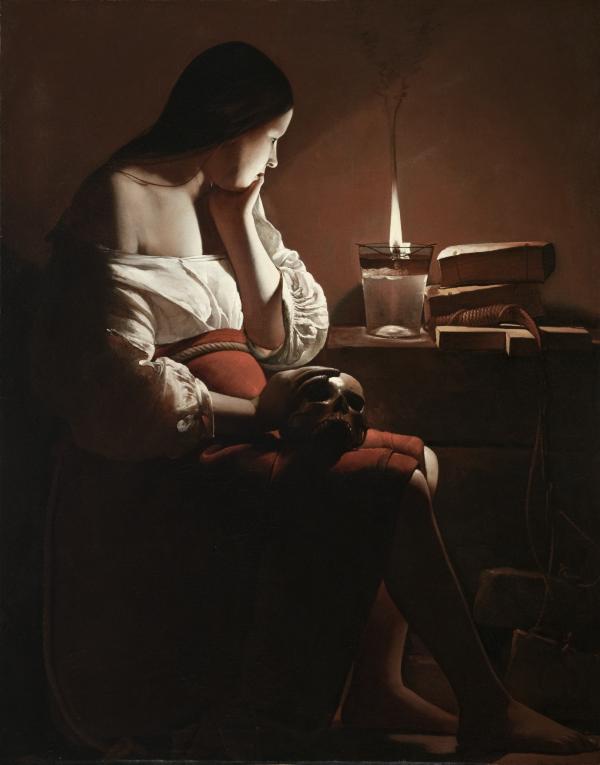
Georges de la Tour, The Magdalen with the Smoking Flame , c. 1638–40, Los Angeles County Museum of Art, gift of The Ahmanson Foundation
In this painting by Georges de la Tour, the state of mind and heart of the Biblical figure Mary Magdalene is emphasized over the context of time and place. This is a departure from typical depictions of Magdalene, which show her as not only an aged woman, but also her emotions vis-à-vis Jesus's important experiences. The light—arguably the focal point of the painting—draws the viewer into contemplation, and the expression on Magdalene's face, the placement of her head into her hand, and the radiating glow from the candle also encourages the consideration of measured thought. The introspective mood is furthered by the placement of the skull on Magdalen's lap and the books of Scripture and scourge on the table that also holds the remarkably detailed flame. The black smoke, which emits from the bright light that followers of St. John of the Cross called "the living flame of love," is depicted with utmost detail and precision, a testament to La Tour's virtuosity in rendering texture and nuance.
The nearly exagerrated chiaroscuro seen in The Magdalen with the Smoking Flame is influenced by La Tour's encounter with the work of artist Jean Le Clerc in the province of Lorraine. Le Clerc was a follower of the Italian master painter Caravaggio, whose method of depicting light—known as tenebrism, or the quick transition between light and dark—was renown. Despite spending his entire artistic career in the small town of Lunéville in the Lorraine province, Le Tour became known as one of the most illustrious painters of his day; his work made it into the prominent royal collections of Europe.
The Magdalen with the Smoking Flame is currently on view on the third floor of the Ahmanson Building. Check out LACMA's Collections Online to learn more about this work .
This year marks LACMA's 50th anniversary. We're celebrating all that we've done while looking forward to what's in store for us in the next 50. Check back every week on Unframed to find a highlight of an artwork from LACMA's collection, which features over 120,000 objects that span time, the globe, and all cultures. This is 12/50 of the series.
Jump to navigation
Search form
- Hours, Tickets & Directions
- Private Tours
- Accessibility
- Exhibitions
- Current Programs
- All Programs
- Publications
- Collaborations
- Conservation
- Pathway Programs
- Membership & Patron Groups
- Building LACMA
- Ways to Give
- Corporate Partners
The Magdalen with the Smoking Flame

Georges de La Tour (France, Vic-sur-Seille, 1593-1652)
Curator notes.
Chrétien de Nogent, ca. 1640(?).
Chrétien de Nogent, ca. 1640(?). La Haye family, near Bordeaux, where traditionally attributed to Le Nain and was said to come from the eastern part of France. Simone La Haye, Paris, ca. 1943, sold 1977 to; LACMA.
Bibliography
- Conisbee, Philip. Georges de La Tour and His World . Washington, D.C.: National Gallery of Art, 1996.
- Thuillier, Jacques. Georges de la Tour . Paris: Flammarion, 1992.
- The Arts of France from François Ier to Napoléon Ier: a Centennial Celebration of Wildenstein's Presence in New York . New York: Wildenstein & Co., Inc., 2005.
- Lehmbeck, Leah, editor. Gifts of European Art from The Ahmanson Foundation . Vol. 2, French Painting and Sculpture . Los Angeles: Los Angeles County Museum of Art, 2019.
- Donahue, Kenneth. Los Angeles County Museum of Art Handbook . Los Angeles: Los Angeles County Museum of Art, 1977.
- Schaefer, Scott, and Peter Fusco. European Painting and Sculpture in the Los Angeles County Museum of Art: an Illustrated Summary Catalogue . Los Angeles: Los Angeles County Museum of Art, 1987.
- Price, Lorna. Masterpieces from the Los Angeles County Museum of Art. Los Angeles: Los Angeles County Museum of Art, 1988.
- Los Angeles County Museum of Art Members' Calendar 1990. vol. 27-28, no. 12-1 (December, 1989-January, 1991).
Conisbee, Philip et al. The Ahmanson Gifts: European Masterpieces in the Collection of the Los Angeles County Museum of Art . Los Angeles: Los Angeles County Museum of Art, 1991.
- Los Angeles County Museum of Art Members' Calendar 1993, vol. 31, no. 1-11 (January-November, 1993).
- Cuzin, Jean-Pierre. Georges de la Tour . Paris: Réunion des Musées Nationaux, 1997.
- Mittler, Gene A. Art in Focus. Glencoe/MacMillan McGraw-Hill, 2000.
- Los Angeles County Museum of Art . New York: Thames and Hudson, 2003.
- Marandel, J. Patrice and Gianni Papi. 2012. Caravaggio and his Legacy. Los Angeles: Los Angeles County Museum of Art.
- Muchnic, Suzanne. LACMA So Far: Portrait of a Museum in the Making . San Marino, California: Huntington Library, Art Collections, and Botanical Gardens, 2015.
- Salmon, Dimitri and Andrés Úbeda de los Cobos, eds. Georges de la Tour: 1593-1652 . Madrid: Museo Nacional del Prado, 2016.
Marandel, J. Patrice. Abecedario: Collecting and Recollecting . Los Angeles: Art Catalogues; LACMA, 2017.
- Judovitz, Dalia. Georges de La Tour and the Enigma of the Visible . New York: Fordham University Press, 2018.
King, Jennifer, ed. Vera Lutter: Museum in the Camera . Los Angeles: Los Angeles County Museum of Art; Munich: DelMonico Books-Prestel, 2020.
The URL of the page you requested has changed. We have automatically redirected you to the new page. Please update your bookmark.
The Magdalene with the Smoking Flame
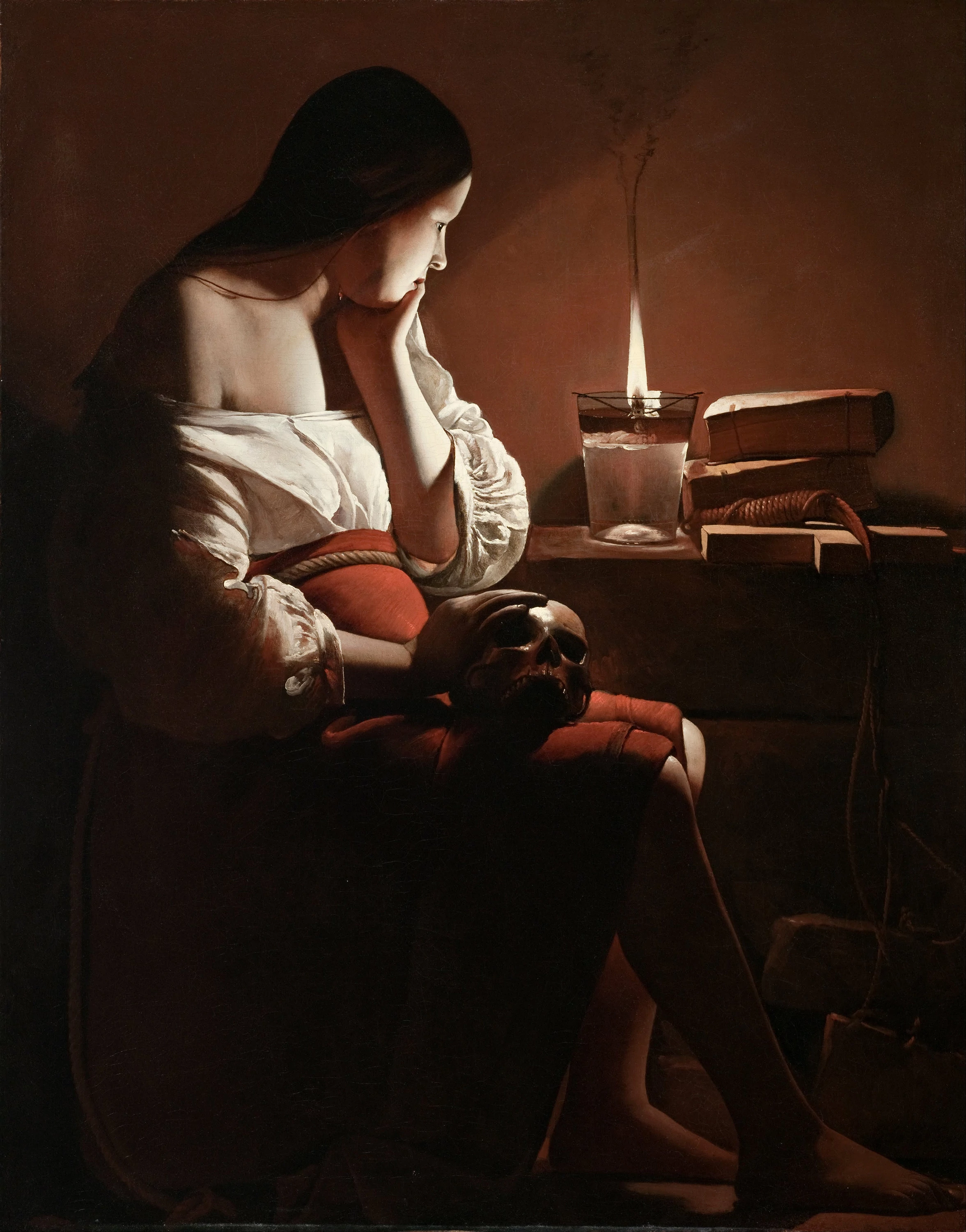
The Magdalene with the Smoking Flame is a Baroque Oil on Canvas Painting created by Georges de La Tour from 1638 to 1640 . It lives at the Los Angeles County Museum of Art in the United States . The image is in the Public Domain , and tagged Mary Magdalene , Skulls and Chiaroscuro Artwork . Source Download See The Magdalene with the Smoking Flame in the Kaleidoscope
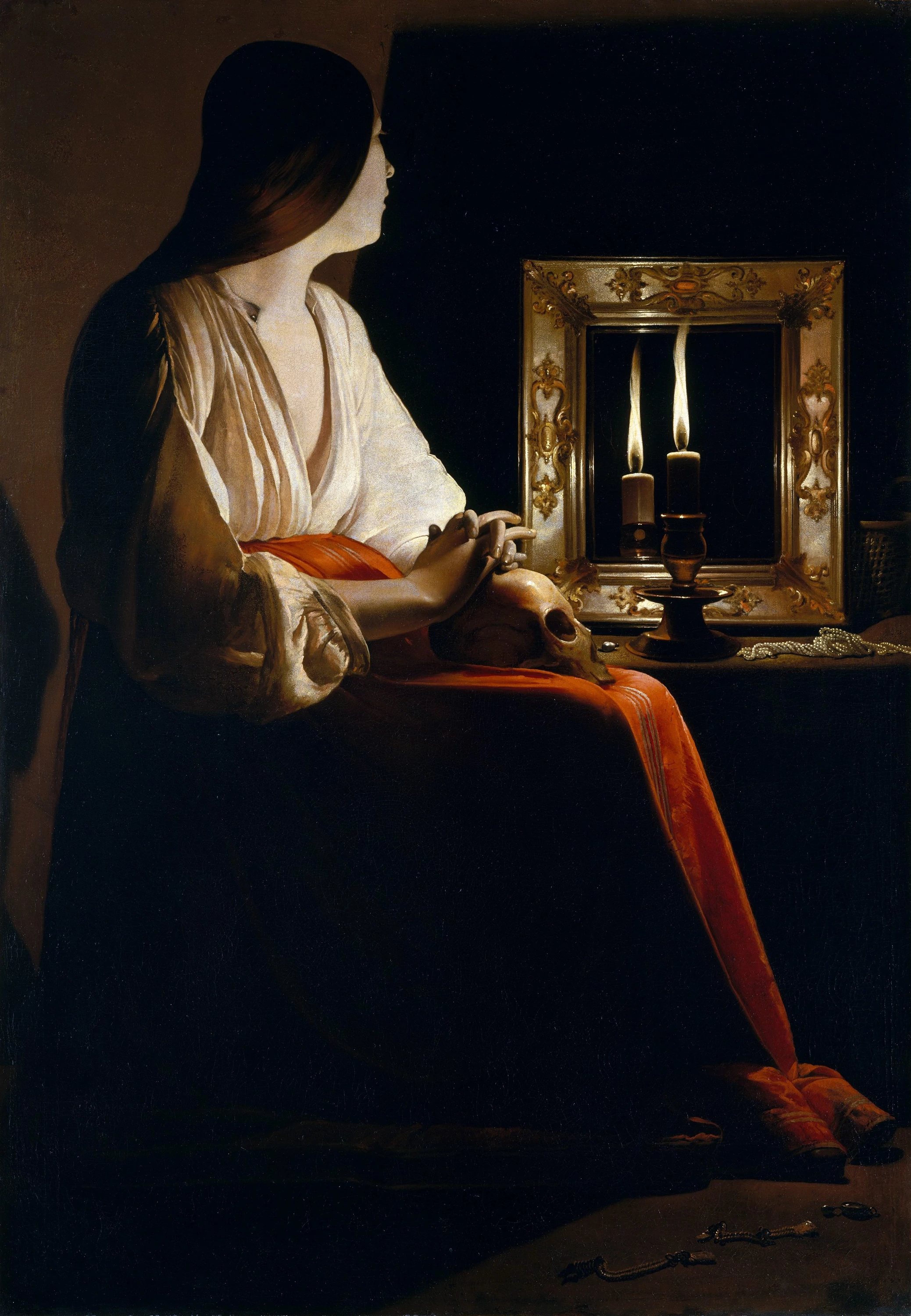

The Penitent Magdalene
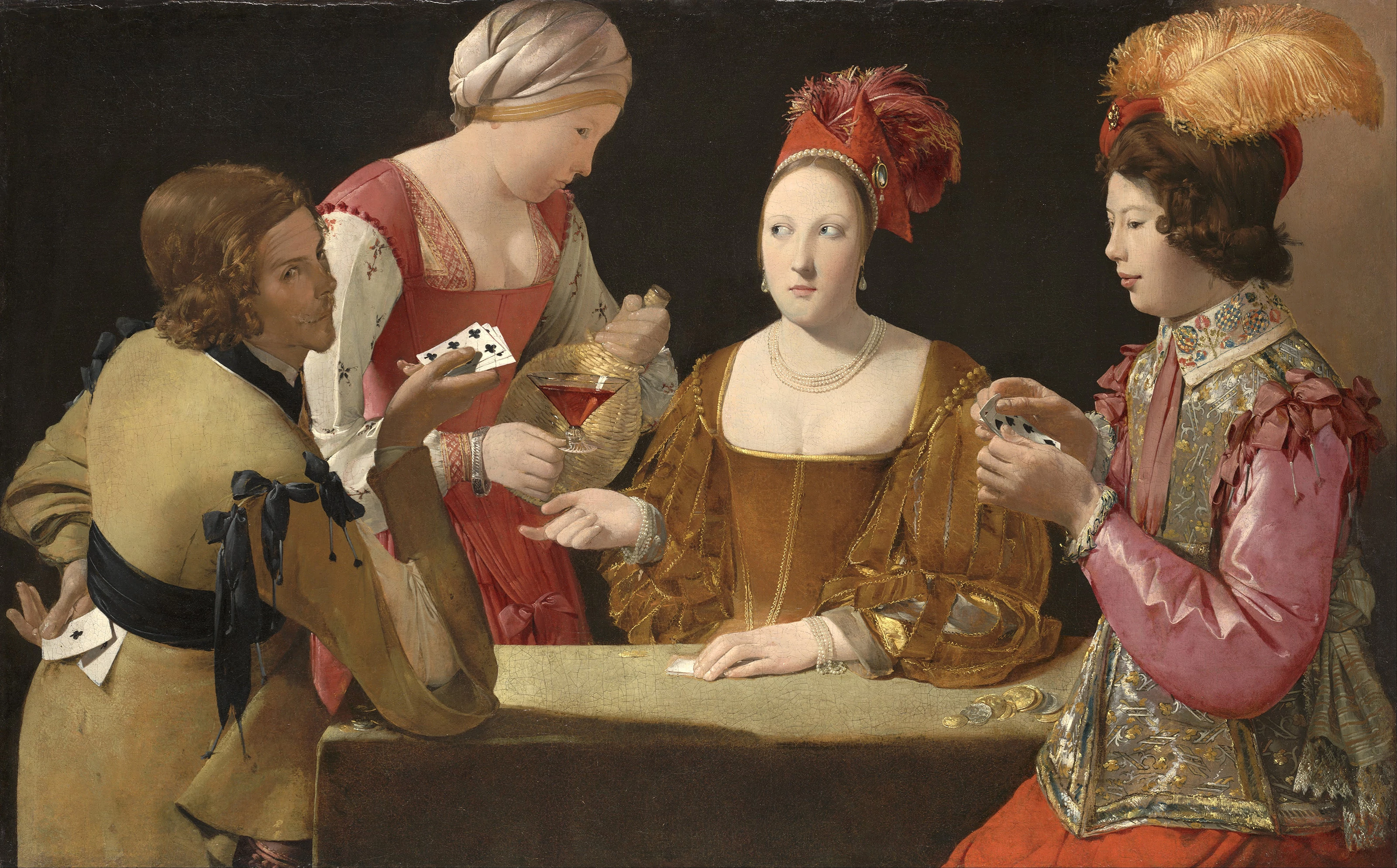
The Cheat with the Ace of Clubs
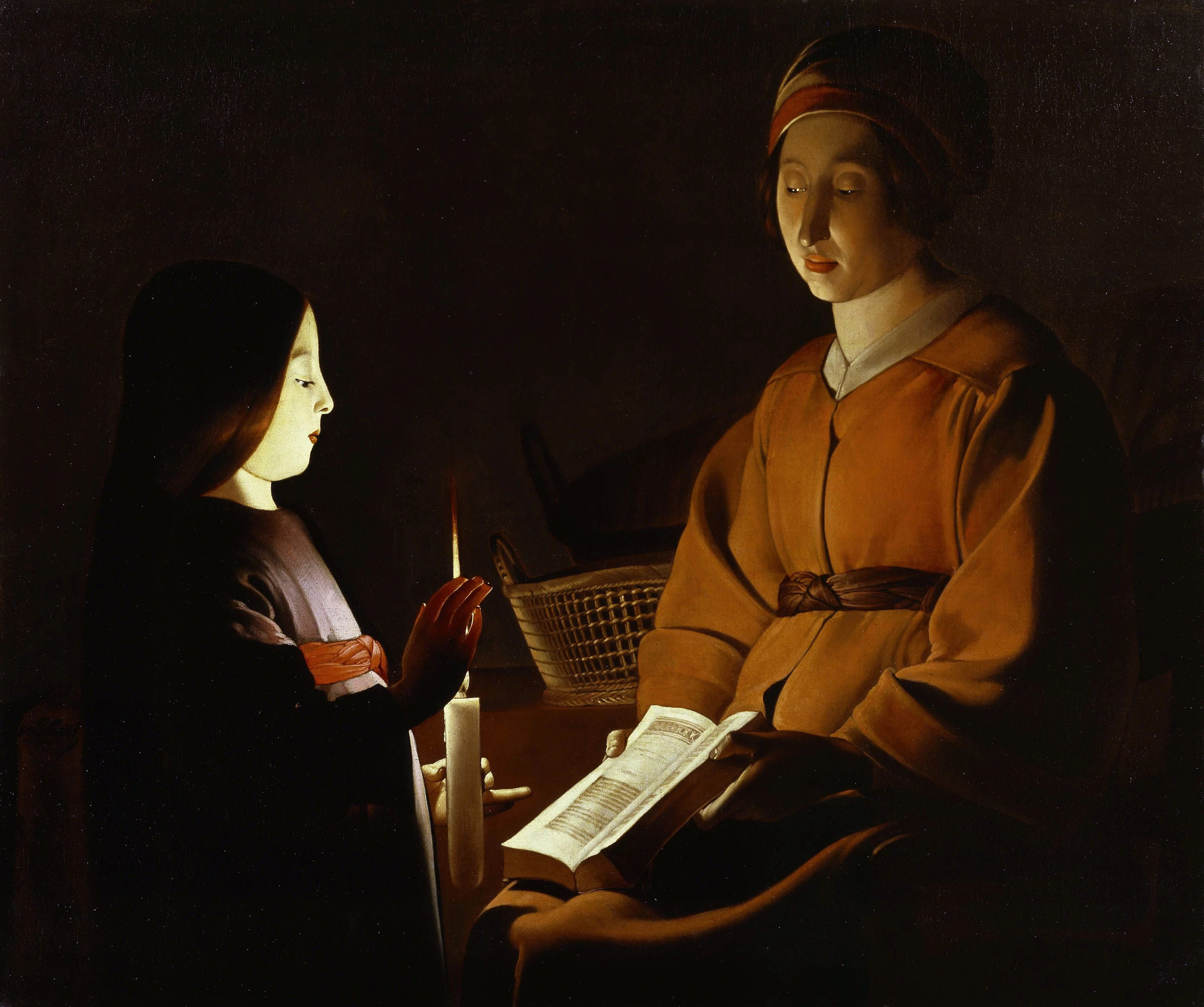
The Education of the Virgin
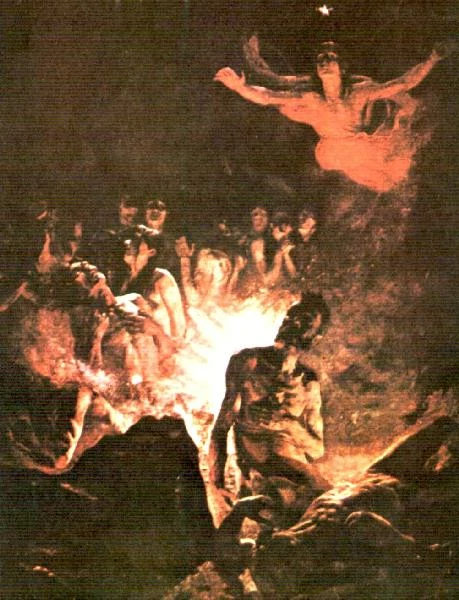
Woman with a Lute
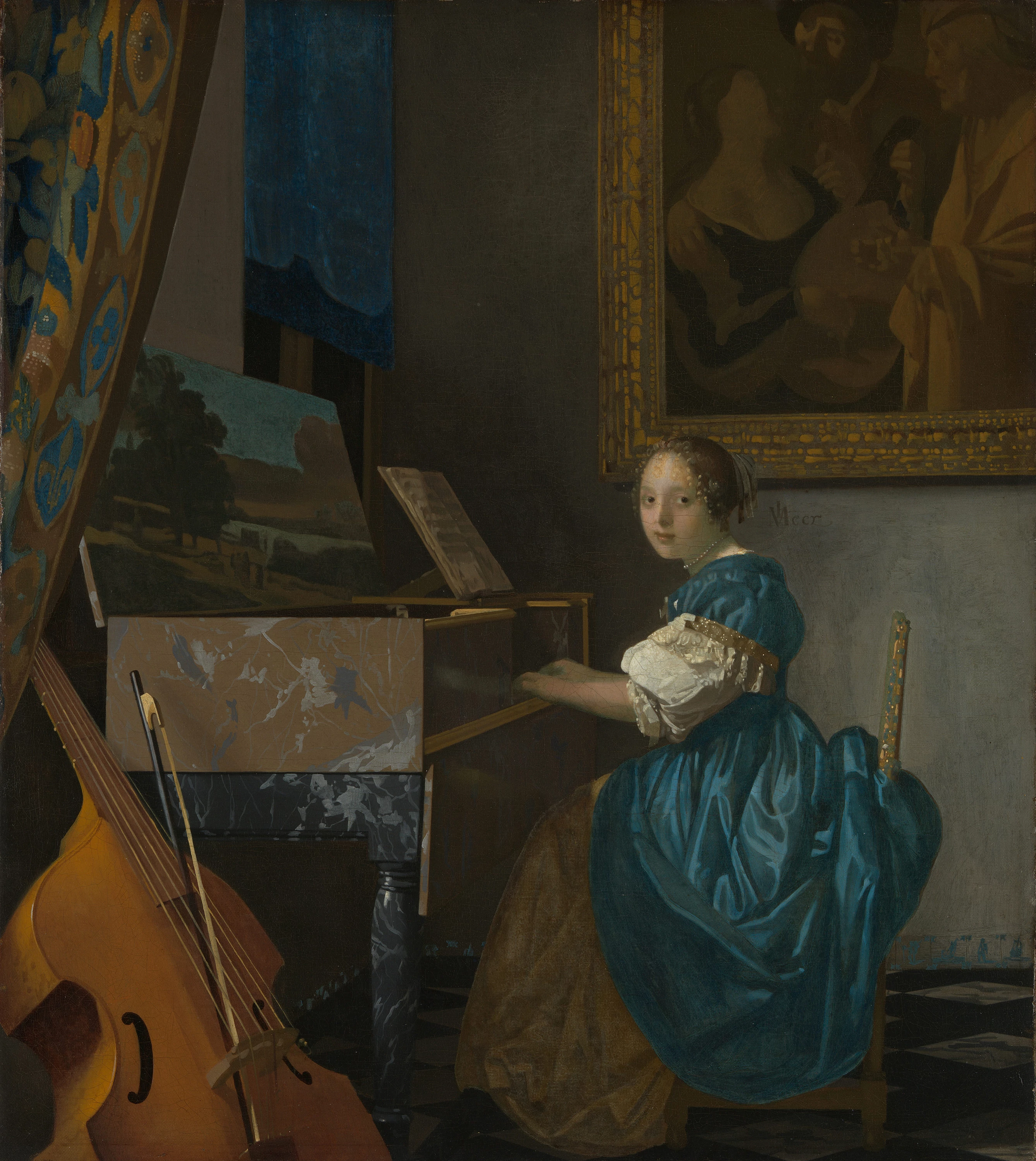
Young Woman Seated at a Virginal
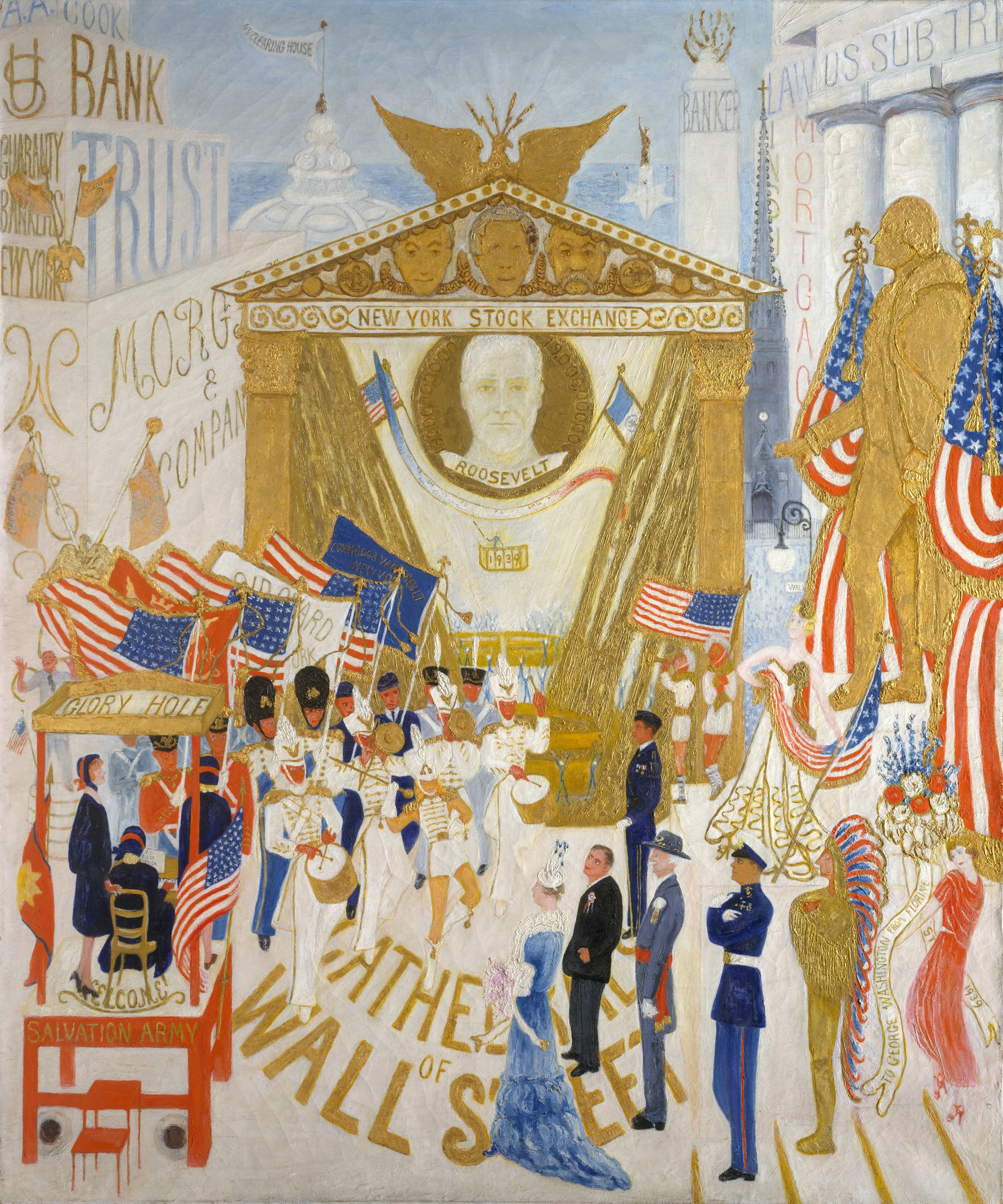
The Cathedrals of Wall Street
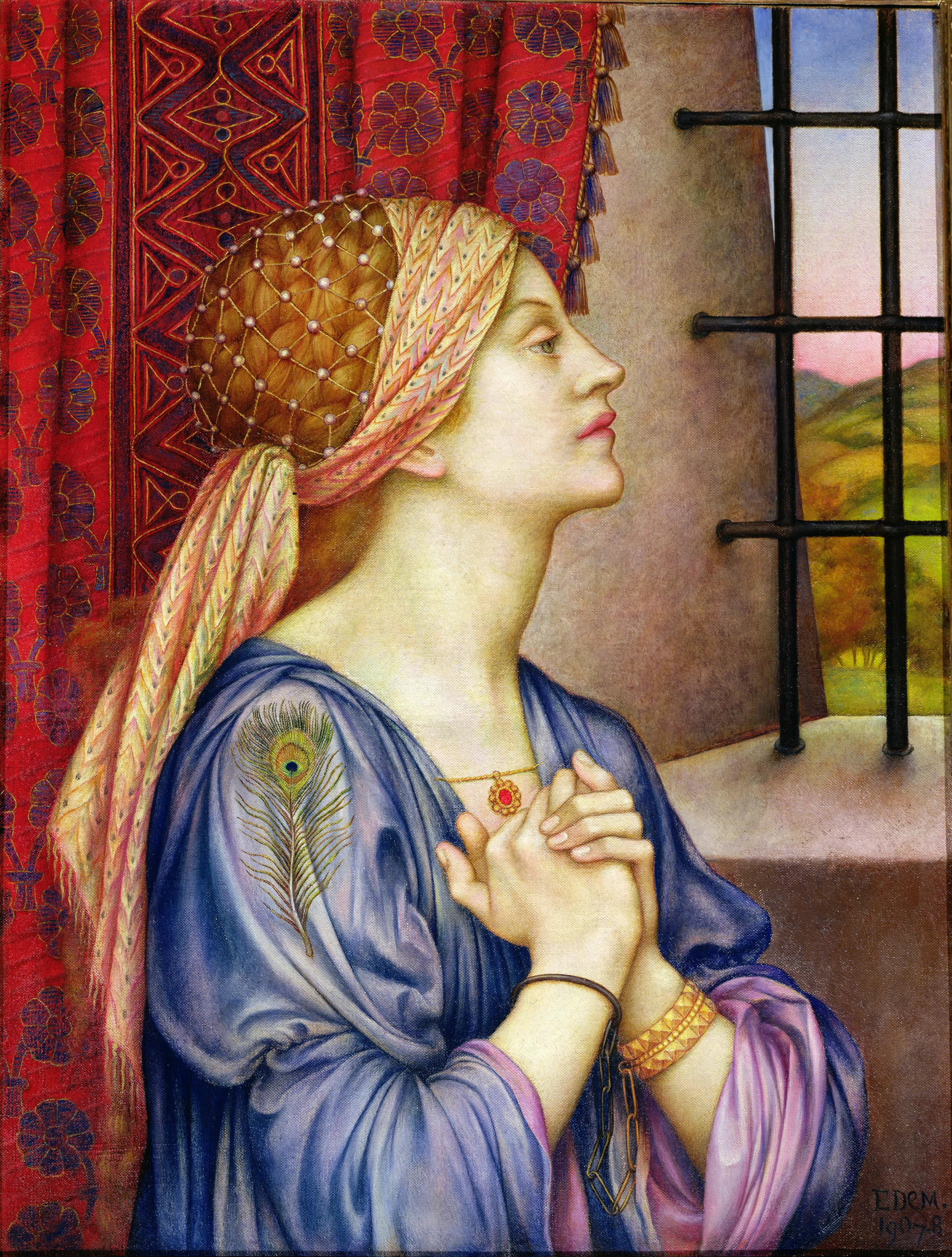
The Prisoner
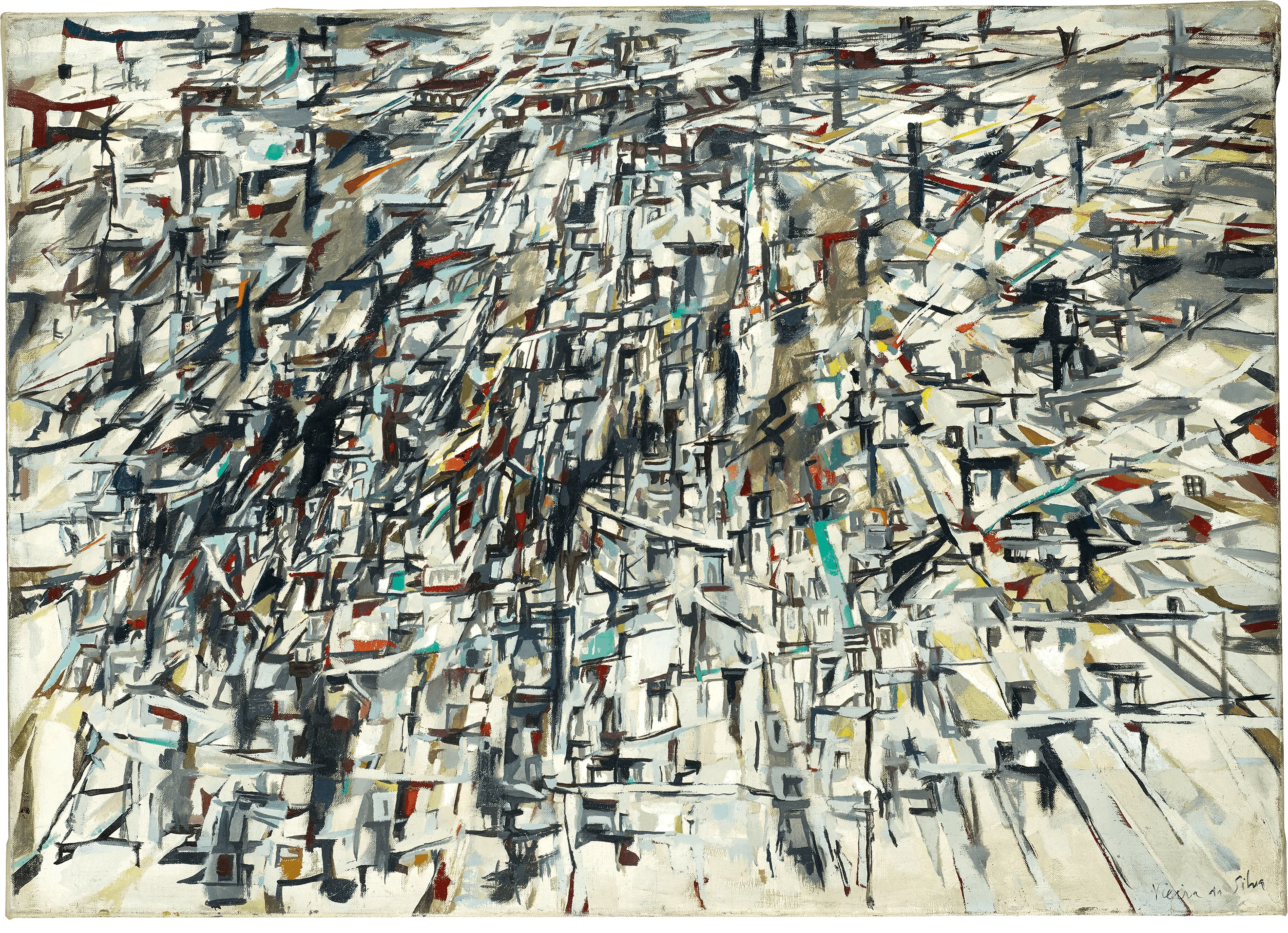
The Sprawling City
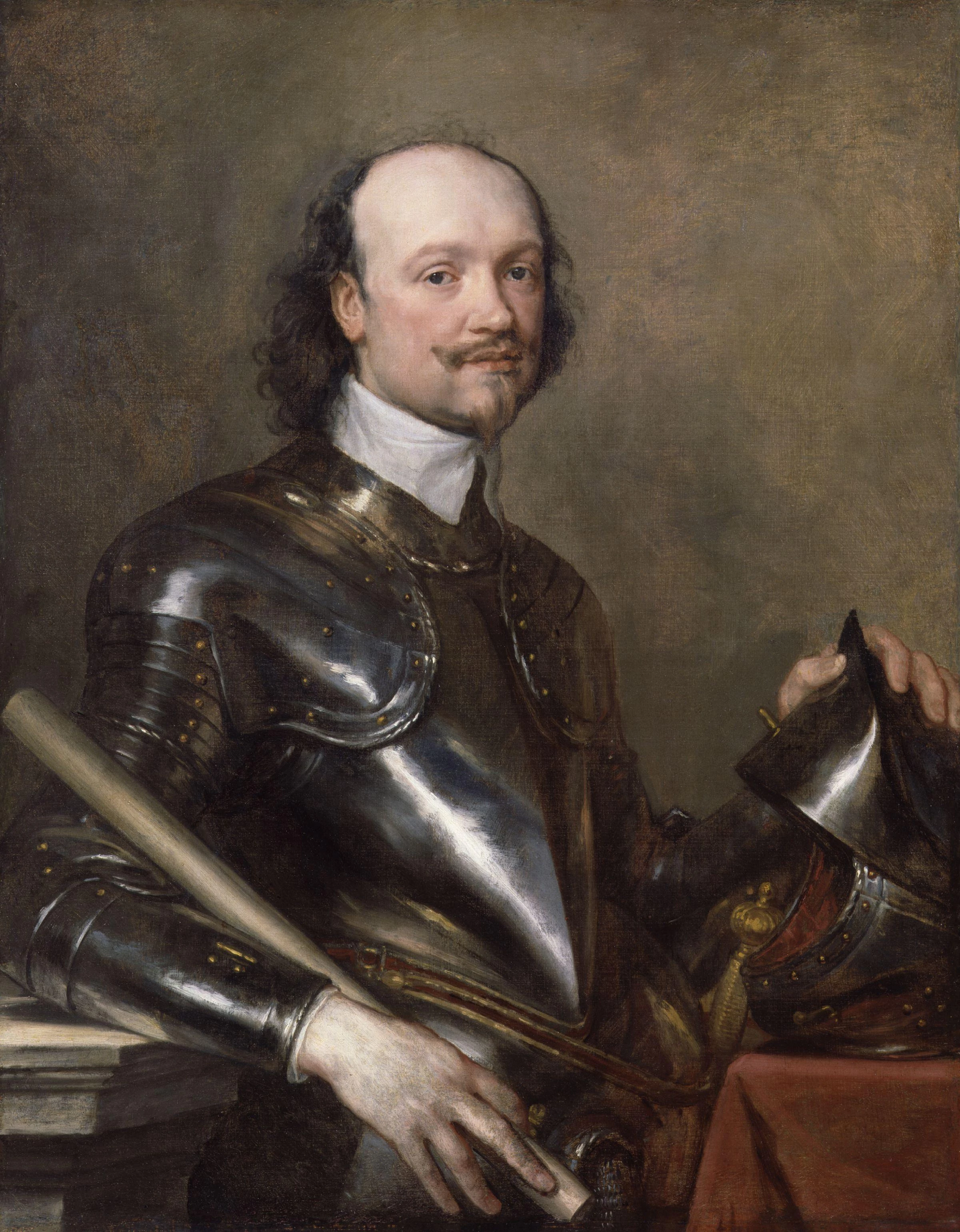
Sir Kenelm Digby
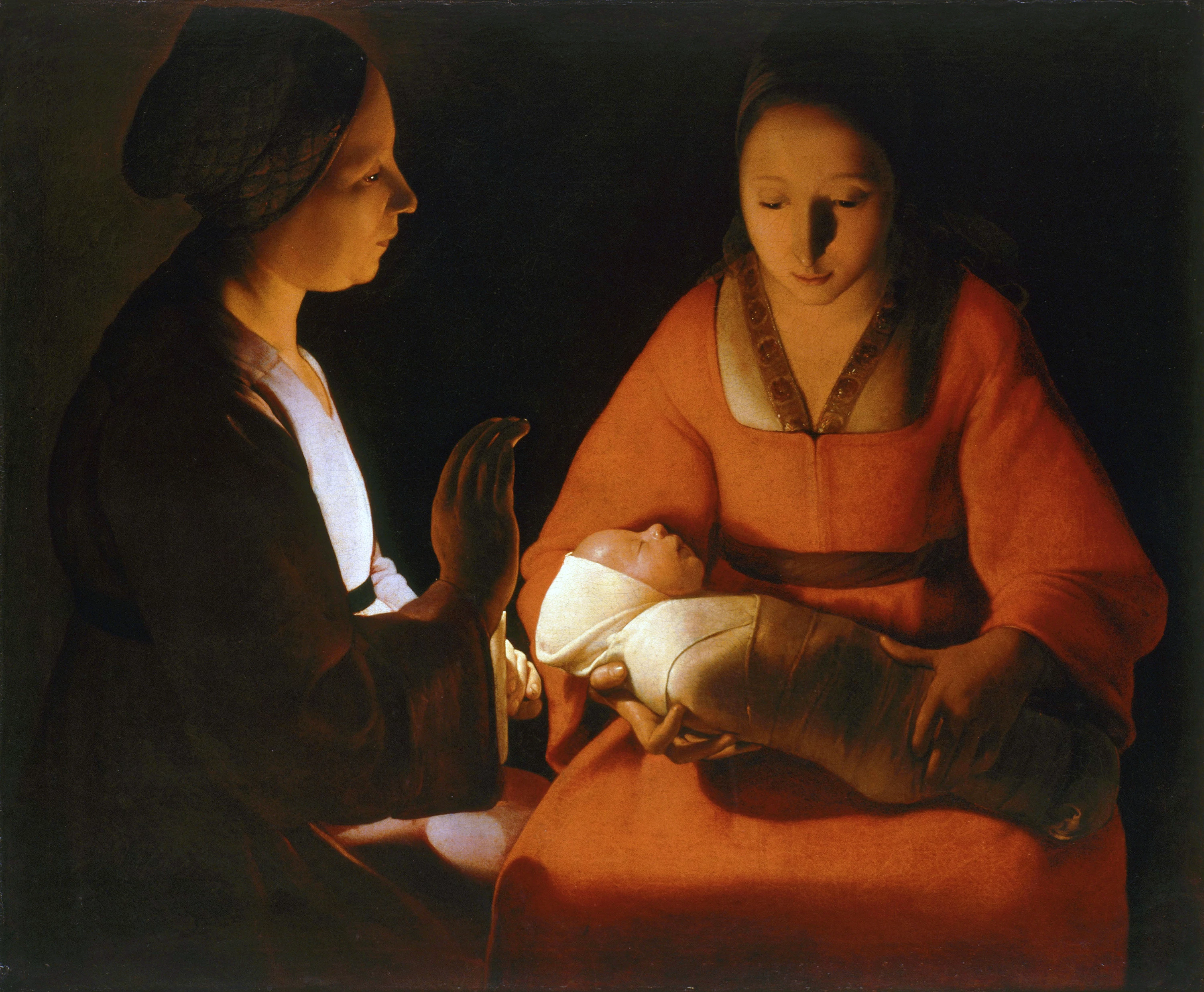
ART REVIEW : Enlightening Look at Two Magdalenes
- Show more sharing options
- Copy Link URL Copied!
Hard times have their consolations. In response to a vision of leaner budgets the L.A. County Museum of Art, like most major American museums, is devising ways to get more mileage out of their permanent collection, while enhancing the art experience.
One of its brightest ideas is “Masterpiece in Focus,” an ongoing series that spotlights one great treasure at a time, juxtaposing it with related works and bringing out a scholarly paper. In this case, the work is a 17th-Century French painting: Georges de la Tour’s “The Magdalene With the Smoking Flame,” inarguably among LACMA’s finest and most moving images.
It is paired with “Repentant Magdalene,” on loan from the National Gallery of Art. The little show’s richly informative brochure is by former LACMA curator Philip Conisbee, whose departure from here to the Washington museum is among the sad fruits of the museum’s recent troubles. Oh, well.
The paintings depict the biblical courtesan Mary Magdalene, who was turned from her wastrel ways by Jesus to become a most fervent follower. Although she gets short shrift in the Gospels, she has long been identified as the unnamed woman who anointed Christ’s feet at the feast at the house of Simon the Pharisee. Present at the Crucifixion, she was the first to see Christ after the Resurrection.
La Tour was born in 1593 so this event tips its hat to his 400th birthday. He died in 1652 after a successful career in unsettled times, when religious wars sparked awful contrast between the sensuous magnificence of Catholic Baroque culture and the privation that follows violence like a hungry dog. No one knows how much of the artist’s oeuvre was destroyed when his adopted town of Luneville was gutted during the Thirty Years’ War. His surviving legacy is as small as it is precious.
La Tour undoubtedly learned his basic pictorial moves at second hand from the great Baroque innovator Caravaggio. La Tour picked up the Italian’s use of everyday people posed as exalted religious icons. He absorbed Caravaggio’s dark settings dramatized by spotlighting and back-lighting. In their younger days both liked gamy lowlife scenes of cheats, mountebanks and cutpurses. Unlike the violent Caravaggio, La Tour never killed anybody that we know of. His art is contemplative, heartfelt and magical in its description of slow, still volumes. If he was a provincial Caravaggio, he was a sophisticated Piero della Francesca.
He painted several variations on the Magdalene theme, suggesting it was meaningful to his patrons. They might have seen a converted whore as a timely metaphor. Conisbee discusses other versions in his paper, including the Metropolitan Museum’s “Magdalene With Two Flames” and the Louvre’s “Magdalene With the Lamp,” a close look-alike to LACMA’s version.
What fascinates here is the demonstration of how relatively small changes in lighting, pose and arrangement of accouterments can subtly but definitively alter the emotional mood and meaning of a picture. It’s a lesson in the stagecraft of painting.
Surely it was the same model for Mary in both pictures with her long, straight dark auburn hair, short nose, rounded cheeks and sensual body. She faces opposite directions in the pictures, but is similarly composed, seated at a desk, lost in candle-lit thought, her chin in one hand. With the other, she touches a human skull. Somehow we know it to be male.
But the National Gallery version, although newly cleaned, is darker. Its candle flame is nearly hidden from us by the silhouetted skull that rests on a book, suggesting a thoughtful mood. The deeply shadowed lower half of the canvas keeps focus on the Magdalene’s face. She regards not the skull itself but its reflection, in a mirror as if she has just realized that death itself is an illusion. This Mary is newly wise and mature. She has just touched the metaphysical.
In the L.A. picture she remains spiritually younger. She strokes the skull cradled in her lap like a lover after lovemaking. We see her bare legs and exposed shoulder. Her gaze goes beyond the candle flame to a rope lash resting on a wooden crucifix. She has just mortified her flesh to tame it after catching herself in smolderingly pleasant thoughts of the old days. She forgot she was already forgiven.
* Los Angeles County Museum of Art, 5905 Wilshire Blvd.; through Feb. 6, closed Mondays and Tuesdays, (213) 857-6111.
More to Read

Prince William shares positive health update about Kate Middleton amid cancer battle
May 1, 2024

‘The Contestant’ tells the bizarre story of a Japanese man who lived a real-life ‘Truman Show’
May 2, 2024

Ariana Madix, Tom Sandoval counter ‘Vanderpump’ co-star Rachel Leviss’ revenge-porn lawsuit
April 30, 2024
The biggest entertainment stories
Get our big stories about Hollywood, film, television, music, arts, culture and more right in your inbox as soon as they publish.
You may occasionally receive promotional content from the Los Angeles Times.
More From the Los Angeles Times

World & Nation
European court upholds Italy’s right to seize prized Greek bronze from Getty Museum, rejects appeal

Entertainment & Arts
L.A. Phil names Kim Noltemy as president and CEO

Review: Ralph Fiennes, an older Macbeth, builds sympathy for a killer with soulful weariness

Inside the secret poker games opening doors in L.A.’s art scene
Georges de La Tour
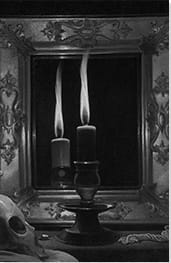
French Artist

Summary of Georges de La Tour
One of the greatest exponents of 17 th century Baroque painting, La Tour's mastery of chiaroscuro was such that he is often named as Caravaggio's natural successor. But La Tour's paintings, although relatively small in number, stand on their own terms for an economy of styling that charge his brooding candlelit scenes with a sense of enigmatic tranquility. La Tour's oeuvre shows a steady progression towards a uniquely minimalist style that would touch upon elements of symmetrical abstraction. Indeed, several historians have championed la Tour as the true progenitor of the Cubist movement. Although he was much admired in his own day, La Tour joins the exalted company of Piero della Francesca and Vermeer as canonical artists whose names and works had fallen into obscurity (and in La Tour's case, misattributed) before being rediscovered (and re-championed) by historians in the 20 th century.
Accomplishments
- La Tour's distinguished himself from others working in the Baroque style through a series of works that feature figures lit dramatically by the soft glow of a single light source. La Tour became increasingly drawn to candlelight scenes - often featuring a young boy or girl absorbed in an everyday task, whereby the flame spreads an atmosphere of otherworldly calm across the whole canvas. As his style evolved, La Tour's works would become increasingly sparse, with his masses reduced to simple, almost geometrical, dimensions. This technique imbues his works with a somewhat modern appearance that has provided a significant addition to the catalogue of 17th century French art.
- La Tour is sometimes referred to as a realist on the grounds that his works addressed the lives and experiences of the "common folk" of his hometown of Lorraine. But La Tour was not a naturalist. For his "real-life" works he achieved a sober, but meditative, quality. Indeed, rather than fixate the picturesque style that was prevalent in Northern Europe at the time, La Tour turned to the Caravaggesque realist approach since it provided the best means of representing "the soul of man".
- La Tour's sparsely populated pictures are rendered in "anonymous" locations with the absence of setting or scenery. His subjects never pose in front of architectural backgrounds or landscapes, with borders and boundaries delineated typically through partitioning devices such as walls. He omitted subsidiary figures with incidental accessories kept to the bare minimum (even his saints and angels were without haloes and wings). This technique, which brought a sense of silent calm, contributed to the enigmatic quality that has come to distinguish his work.
- La Tour's paintings, almost exclusively genre and religious works, can be divided between daytime and night-time scenes. Whereas the latter are defined by artificial light and a near elimination of color, the former, such as The Cheat with the Ace of Diamonds (c. 1635) and The Fortune-Teller (undated, c.1630-34), are distinguished by for their sharp, clear lighting, and a precision of brushwork. La Tour's works from this phase already indicate something of his individuality in their exquisite ornamentations and rendering of textures.
The Life of Georges de La Tour
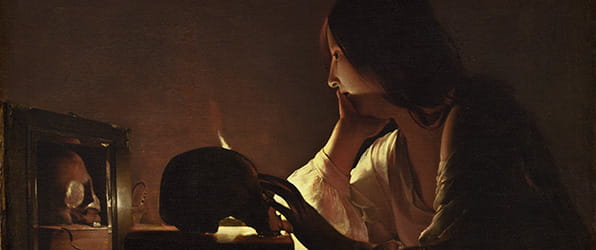
According to author Christopher Wright, La Tour, "was seen as the great master of candlelight paintings, set apart from his contemporaries, by a near magical approach, both in subject matter and technique".
Important Art by Georges de La Tour
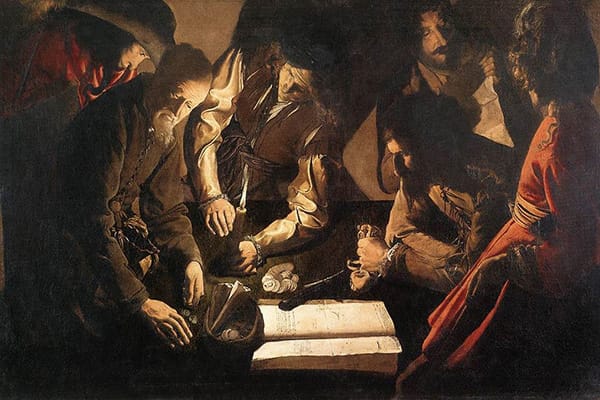
The Payment of Taxes
An important early work by La Tour, it shows an elderly man paying a tax (or debt) to group of men. The scene carries an element of threat in that the taxpayer seems as if he is being intimidated by the group. Author Philip Conisbee says of the work, "It has been convincingly suggested that its source lies in the tradition of tax-paying scenes, a well-established theme in Netherlandish art since the sixteenth century". Yet the painting carries a certain ambiguity in that, what might be on surface level a generic peasant scene of the powerful subjugating the meek, could be a modern reinterpretation of the biblical story of the "Calling of Matthew" (the tax collector who became a disciple) if, as some historians believe, it was painted during the earliest period of his career when he was chiefly engaged in painting the saints. In either case, this work offers confirmation of La Tour's skill at creating complex group compositions. According to Conisbee, here "La Tour employs a crowded space, somewhat awkward, eccentric poses, and a self-conscious use of artificial light to create the atmosphere of a silent and unsettling drama. Every feature of the painting - gestures, expressions, enigmatic poses, the play of light and shade - works to produce a tense, concentrated mood. Even the elevated viewpoint adds to the tension we experience from this encounter. [Even though early in his career, it] is already characteristic of La Tour's approach to painting: he rarely chooses an innovative subject, but he meditates on it deeply and presents it in a highly focused or concentrated way. There is no visual distraction, no ornament for ornament's sake. Forms are reduced to essentials, as are the gestures and expressions of his actors, establishing in this case a threatening mood".
Oil on canvas - Museum of Fine Arts, Lviv, Ukraine
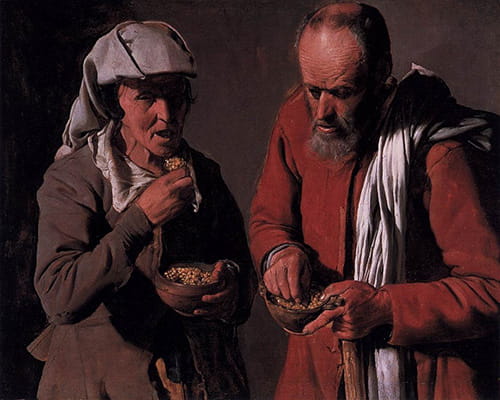
Old Peasant Couple Eating
This painting is one of La Tour's key early works. It amply demonstrates his flair for capturing the mood of his subjects. As author Vittorio Maria de Bonis notes, the couple "ignore each other and instead sink their melancholy gaze into the eyes of the viewer as they angrily and greedily eat spoonfuls of the bright peas inside chipped, rough terracotta bowls". The mature figures are desperately hungry and they might easily symbolize the population of Lorraine (in Northeastern France) who had grown exhausted through war and famine. The bleak mood is reinforced through the dramatic Baroque style that sets the figures, whose faces and figures are cast in shadows, against a dour, featureless, background. De Bonis calls the painting, "one of the most eloquently desolate images of hunger and poverty ever painted". This work is also interesting because, unlike the artist's later pieces, it is not obvious to the viewer what message La Tour was trying to communicate. According to author Philip Conisbee, the work, "presents something of a dilemma for the modern viewer, for there are no clues about how the artist and his public understood such a picture: should we pity their plight, look down on them, or just savor their picturesqueness?". Conisbee suggests that La Tour invests his subjects "with a certain dignity, which perhaps means we should admire them as 'salt of the earth'". It is this fascinating element of ambiguity that contributed to the painters soaring reputation amongst 20 th century historians.
Oil on canvas - Gemäldegalerie, Berlin, Germany
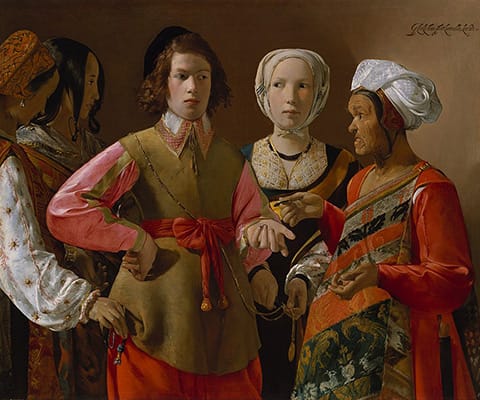
The Fortune-Teller
Art historian Deanna MacDonald writes, "This painting is full of enigmas relating to its painter, subject and provenance. Signed in Latin in its top right corner 'G. de La Tour Fecit Luneuilla Lothar' (made by G. de La Tour, Lunéville Lorraine), this is one of the few daylight paintings by an artist who specialised in nocturnal scenes". In this narrative work, a well-to-do young man looks questioningly at the toothless old woman on the far right of the canvas as she holds out a coin. While focused on whatever tale she is spinning, he fails to realize that the other women standing around him, in cahoots with the older woman who has distracted him, are in the act of picking his pockets. MacDonald observes, "There is no indication of setting, though all wear colourful costumes. Are they in a brothel? Are the robbers gypsies? As it has a theatrical air, could it be a scene from a play, such as the parable of the prodigal son? But la Tour does not play the scene for comedy or eroticism. Sideways glances, expressive hand gestures and a mix of shadow and crisp daylight create an atmosphere ripe with tension: what will happen next? Details are meticulously rendered; from the patterns on the colourful fabrics to the words AMOR (love) and FIDES (faith) written minutely on the young man's watch chain. Despite the moralising theme, the artist seems to imbue each character with humanity: the foppish youth seems more naïve than dissolute and there is a sense of sadness and peril about the thieves (punishments for stealing in the 17th century included cutting off an ear, branding or death). The picture seems to warn of the dangers for all in a world of deceit and greed". MacDonald also introduces an interesting historical caveat into readings of the painting. In 1984 the art historian Christopher Wright published a book in which he claimed that all of La Tour's daylight pictures were in fact forgeries. MacDonald observes, "Wright, who as a young scholar had been involved in La Tour authentications, said that he had been pressured to pronounce the work genuine by powerful figures such as Sir Anthony Blunt, the famed art expert/spy. Wright even suggested that a French restorer (who died in 1954) named Delobre who worked for Wildenstein in the USA had painted them. Many have dismissed Wright's claims, including the Met [Museum of Art] but an aura of mystery remains".
Oil on canvas - Metropolitan Museum of Art, New York, USA
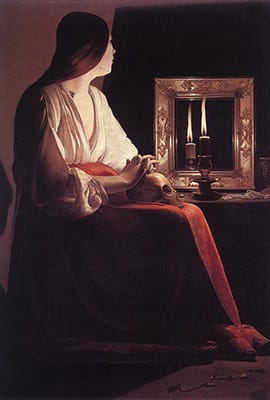
The Penitent Magdalen
The Penitent Magdalen is rich in the type of religious symbolism that would have been easily understood by audiences of La Tour's day. As the Metropolitan Museum of Art explains, "the quiet atmosphere of this painting perfectly fits the subject, Mary Magdalen, who renounced the pleasures of the flesh for a life of penance and contemplation. She is shown with a mirror, symbol of vanity; a skull, emblem of mortality; and a candle that probably references her spiritual enlightenment". Here, as in his others works in this style, La Tour uses heightened chiaroscuro - or tenebrism - to underscore the mood and/or motivation of his subject. Conisbee writes, "At its most basic level the darkened interior enabled the artist to play on the theme of light and reflected light in contrast with the surrounding obscurity. It could set a mood conducive to contemplation and meditation, both for the actors in his pictures and for the participating spectator. Light and darkness had symbolic values on several levels: most obviously in the contrast between the spiritual darkness of our mortal world, illuminated by the light of the divine". Indeed, Mary Magdalene is a fitting subject for La Tour's Baroque treatment. The candle, which was widely interpreted as a symbol of Christ's presence, features here to connote an act of meditation and Magdalen's new faith (in Jesus) that will lead her away from a life of sin. But perhaps the most striking stylistic feature of this work is the reflection of the candle in the mirror. As Conisbee explains, "The two flames really dominate the picture, not only because they are the source of light, illuminating the figure of the Magdalene, but also because the repeated image of the flame and its reflection are so compelling; we can see both sides of the candle, and the far side best because it is illuminated by the reflected light. Only the skull on Magdalene's lap suggests that she may be pondering the earthly reality of our mortality and the eternal truth of the spiritual life, while deciding to abandon the blandishments of the material world".
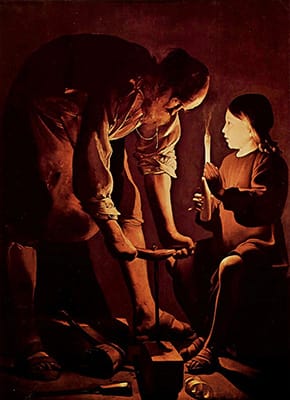
Saint Joseph in the Carpenter's Shop
A rarely depicted subject, La Tour has shown Jesus as a young boy in the workshop of his carpenter father. Joseph dominates the scene and is bent down over a piece of wood, which he is working with a tool. Jesus holds a candle to help his father to see, effectively bathing his whole face in light. Joseph's eyes seem to be turned upward towards his son, suggesting they are in conversation. In fact this could be read as a humble familial scene were it not for the painting's title. La Tour's nocturne painting shows how he used lighting effects to elevate drama over naturalism. As authors Claudio Falcucci and Simona Rinaldi write, "one example of the extent to which what is portrayed in his paintings can be divorced from reality is visible in the Child's hand hiding the candle [...]. It is commonly known that light transmitted across a hand with its fingers closed produces a bright red colour, which is at its brightest where the fingers touch one another, and darker where the hand is thicker. In no case do we ever observe a white contour around the fingers, especially when they slightly overlap as they do in the representation. [...] Indeed, a constant element in La Tour's canvases seems to be his moving beyond the mere description of the physical phenomenon of the light released by the candle in the name of a more highly symbolic value".
Oil on canvas - Louvre Museum, Paris, France
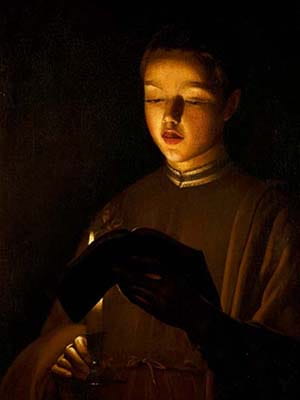
The Choirboy
This work is characteristic of La Tour's penetrating application of the Baroque style. To enhance the drama of his scenes, and demonstrating his sophisticated handling of chiaroscuro that expresses itself in sharp tenebrism, he allowed his figures, in this case a solitary choirboy wearing a plumb colored alb with a delicately embroidered collar, to be illuminated by the light of a single candle. What is perhaps most interesting about this work from a compositional point of view is that the candle is not visible; rather it is hidden behind the hymn book that the boy holds. Only the tip of the flame and the base of the candle in the boy's hand is peeking out from behind the book. La Tour's clever composition reinforces the dedication of the boy to the task at hand while perhaps allowing the viewer to contemplate their own faith and devotion. Art critic Laura Cumming offers this reading of the painting: "La Tour must have seen a Caravaggio somewhere, if only as a print - but nobody has ever put such emphasis on the behaviour of candlelight. The way it strokes surfaces, sends out showers of highlights, gives warmth as well as light while casting everything beyond its ambit into blackness. His figures appear spellbound by the magical flame, seized with its mystery; only the candlelight shifts. He often achieves this by hiding the light source itself. [Here a] choirboy holds a candle up to his hymns but we only see the tip of the flame above a book that's as black as night. All that is visible, in fact, in this cave of seething darkness are the fingers, the face and this mesmerising flicker, giving the queer sense of a soul in trance. And what a serene mask the boy has, radically simplified and slightly oriental like many of de La Tour's characters. His candlelight seems to sheer away irregularities like a laser, polishing skin and making diamonds of eyes".
Oil on canvas - Leicester Museum and Art Gallery, Leicester, England
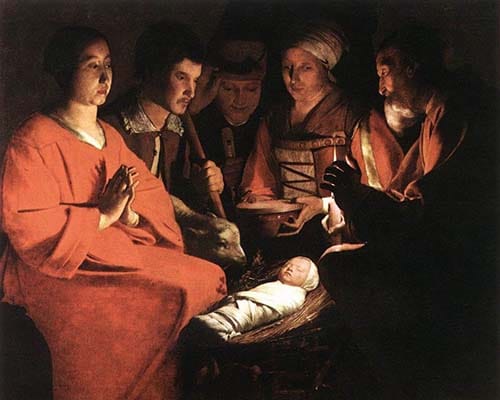
The Adoration of the Shepherds
In La Tour's nativity painting, the Christ child, swaddled in white cloth, is featured bathed in light in the center of the composition. Mary sits on the left, hands clasped in prayer while Joseph, sitting directly across from her, has his hands raised in praise. Two shepherds and a peasant girl occupy the background and look down on the baby adoringly. While the nativity has been a popular theme for artists throughout history, La Tour's approach distinguishes itself from other works in this theme. According to Conisbee, "the story lent itself to a nighttime scene, and there are countless prototypes in the sixteenth and early seventeenth centuries. La Tour has gathered a group of five sympathetically observed worshippers around the Christ Child, who seems to radiate more light than he can possibly simply reflect from the candle held by Joseph. This last detail is significant. [...] La Tour brings a sense of intimacy and tenderness to the scene, and we can admire his powers of observation in the swaddled child. [...] There is no sense of theatricality in La Tour's interpretation: no dramatic gestures or exaggerated expressions". In this example we can see a style of rendering figures that helped distinguish La Tour from the approach of Caravaggio (to whom he was/is routinely compared). As Falcucci and Rinaldi explain, "while Caravaggio tended to emphasize the sculptural qualities of his subjects by painting them before he painted the background, which he then darkened depending on what was needed, always being sure not to let the background and the subject come into pictorial contact with each other, La Tour made very distinct borders between the background colours, which he then painted independently so that the figures were transformed into shapes applied to the background, with no dialectical rapport between the two".
Biography of Georges de La Tour
Childhood and education.
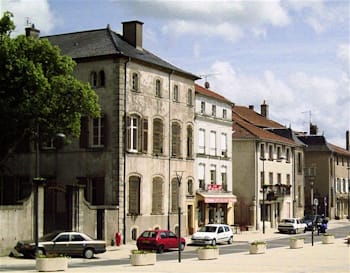
There is little information about the early life of Georges de La Tour, and without a surviving self-portrait (assuming he had painted one), we do not even have an image of the artist. All that is known (rumors that he was arrogant and unpopular with his neighbors notwithstanding) is that he was the second of seven children, born in Vic-sur-Seille (Vic), a large market town in the independent duchy of Lorraine (now part of north-eastern France). His father, Jean de La Tour, was a baker, his mother, also from a family of bakers, was named Sybille de Crospaux. His baptismal certificate was registered in Vic on 14 March 1593.
Early Training
That La Tour must have had an early interest in art can be assumed given that in the seventeenth century one would not have been accepted into a workshop to study unless he or she had already demonstrated a nascent talent. Art historian Gail Feigenbaum suggests that "His apprenticeship likely began around 1605, perhaps in Vic with Alphonse de Rambervilliers, a writer and amateur engraver close to the bishop of Metz, and he very likely worked in Nancy with the painter, etcher, and draftsman Jacques Bellange". Authors Claudio Falcucci and Simona Rinaldi have also conjectured that La Tour "received his artistic education in the workshop of the Swiss painter Claude Dogoz, who was working in the lively Lorraine area at the time". And while little is known about his religious upbringing, Feigenbaum observes that his devotional paintings, such as The Repentant Magdalen (c. 1640), "demonstrate powerful introspection and intense spirituality [that] may reflect the strong Catholic sentiments of Lorraine, which bordered northern Protestant states".
The influence of the Italian Baroque style , especially in the dark and dramatic backgrounds of Caravaggio (La Tour was still a teenager when the archetypal artistic rebel died, or was killed), begs the question: where would the artist have seen and studied such paintings? As Feigenbaum writes, "there has been much unresolved discussion about a possible trip to Rome". La Tour had begun painting with Dogoz and it is thought that he could have travelled to Italy with Dogoz between 1614-16, where he discovered the paintings of Caravaggio. Feigenbaum acknowledges that "La Tour's low-life subjects and his bold tenebrist manner of painting seem to be heavily indebted to the work of Caravaggio [...] and his followers in Rome [such as Bartolomeo Manfredi]. But Caravaggio's influence was spreading throughout Europe in the second decade of the century so it was by no means necessary for La Tour to have made an Italian trip". Indeed, Gerrit van Honthorst and Dirck van Baburen were working in the Baroque style in Utrecht, while in Lorraine, Jacques Bellange and Jean Leclerc were both exploring the dramatic potential for tenebrist lighting effects.
Mature Period
La Tour was married to Diane Le Nerf, a woman of status and wealth, in 1617 (La Tour gave his profession as painter on the marriage certificate). Her family were silversmiths and her father served as the minister of finance to the Duke of Lorraine. Having lived at the Le Nerf's family residence in Vic, they settled in the city of Lunéville (15 miles south of Vic) following the birth of their first child (Philipp) in 1620. (The couple were parents to a total of nine or ten children, although only three would reach adulthood, including their son, Etienne, who was officially ennobled as a painter in 1670.) In Lunéville, La Tour joined the studio of Claude Baccarat and between 1621-24 the Duke bought two of La Tour's paintings. With his reputation secured, La Tour established his own workshop in Lunéville where he employed apprentices.
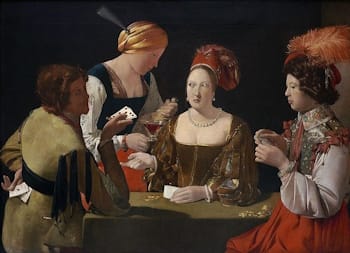
The La Tours lived through a time of great uncertainty. It was the period of the Thirty Year War (1618-48) and by the 1630s Lunéville was becoming increasingly unsafe. As historian Gabriel Diss states, "La Tour needed great determination and unflinching energy not to be crushed by the incursions of armed rabble, the hordes of poverty-stricken refugees, the state of famine and the plague that struck Lorraine three times, in 1631, 1633, and 1636. He shouldered the great responsibility of supplying the needs of a workshop and a family of nine children, a burden made still greater in 1631 when he was appointed guardian of his nephews Antoine and François Nardoyen. The records show that he performed his duties with fairness and clear-sightedness".
The independent duchy of Lorraine (now northeastern France) sat between France and the Germany of the Holy Roman Empire. The citizens of Lunéville (located within the duchy of Lorraine) were trapped in the war between these two mighty colonial powers and La Tour and his family lived with a constant fear for their safety. After his home was ransacked, and his workshop razed, during a sack of Lunéville by the French in 1638, La Tour moved his family 30km to Nancy. Despite his close friendship with the Duke of Lorraine, La Tour now pledged his loyalty to the French. With his family safely settled in Nancy, La Tour left for Paris in 1639 where he took up his most prestigious position as peintre du roi ("Painter in Ordinary to King Louis XIII of France"). He made such an impression in this role that he was granted permission to set up a living space in the Louvre a year later.
Later Period
Once Lorraine became secure again (now under control of the French) La Tour was able to return home with his family. According to records dated 1643 he established a successful new studio in Lunéville. He produced religious and domestic scenes, both genres of which were popular throughout Europe. According to author Philip Conisbee, "La Tour conducted his artistic affairs in a solidly professional way: there were contracts, agreements, and schedules of payment. We know that he ran a small studio [and engaged apprentices] who helped out in the day-to-day running of his business and learned at least the rudiments of art from him. He [also] presumably trained his son Etienne".
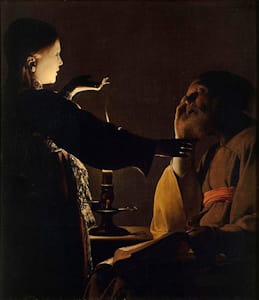
Feigenbaum writes that, "between 1644 and 1651, the marquis de La Ferté-Sénecterre [...] the French governor of Lorraine, received six of La Tour's paintings as tribute from the cities of the region". It was also during this period that his nocturne paintings became popular. Anchored in the Baroque style, it was through his nocturnes that La Tour distinguished himself among his peers in the subtle way he used light to dramatize the actions of his subjects. Historian Pat Bauer writes, "The paintings of La Tour's maturity [...] are marked by a startling geometric simplification of the human form and by the depiction of interior scenes lit only by the glare of candles or torches. His religious paintings done in this manner have a monumental simplicity and a stillness that expresses both contemplative quiet and wonder".
Tragically, the plague that swept through Europe in the 1650s ravaged Lorraine and it is believed to have been the cause of La Tour's wife's death in 1652. What wider success La Tour might have achieved will remain unknown as this epidemic, a possibly a deep sense of grief, most likely claimed the artist's life only two weeks after his wife's passing. La Tour was fifty-eight years old.
The Legacy of Georges de La Tour
According to the author Dimitri Salmon, "La Tour's works were seldom copied in engravings and hence little known, nor did he have a biographer to record his life for posterity. Finally, Lorraine was constantly devasted by war for three centuries, and with it not only the painter's workshop but also the churches, monasteries, castles and mansions where his paintings hung". It wasn't until the early twentieth century that art historians began to examine La Tour's work through a contemporary lens, beginning in 1915 through the writings of art historian Hermann Voss. Calling his art "one of the great rediscoveries of the 20 th century", the historian Susan Moore states, "Today it seems inconceivable that this most compelling and singular of artists, highly successful in his day, should have been almost entirely forgotten for three centuries. [...] The reconstruction and rehabilitation of his artistic career have been described as 'the triumph of art history, and its justification'".
La Tour's work has had a profound influence on subsequent generations of artists. As Salmon states, "it is the fame of these works which is taken to task by the artists of the end of the twentieth and beginning of the twenty-first century as much as their beauty and the interest they arouse. Whatever their age, their career path or their nationality, whatever their aim or their technique, in their own way, today's artists - from the Chinese artist Yin Xin to the Mexican Alejandra Figueroa, the French artists Jérome Mesnager, Gérard Collin-Thiébaut and Frédéric Coché and the Italian Gerardo Dicrola - amply illustrate the tremendous infatuation with Georges de La Tour and the fascination that his Christ with Saint Joseph in the Carpenter's Shop and Adoration of the Shepherds exert more powerfully than ever before".
Influences and Connections

Useful Resources on Georges de La Tour
- Georges de La Tour and his World Our Pick By Philip Conisbee
- Georges de La Tour By Jacques Thuillier
- Georges de La Tour and the Enigma of the Visible By Dalia Judovitz
- Georges de La Tour: The Adoration of the Shepherds Christ with Saint Joseph in the Carpenter's Shop Our Pick Edited by Valeria Merlini, Dimitri Salmon, and Daniela Storti
- Flickers of genius By Laura Cumming / The Observer / July 15, 2007
- Georges de la Tour: The Fortune Teller - c1630s By Deanna MacDonald / Great Works of Western Art
- The Fortune-Teller Metropolitan Museum of Art, New York
- A sale in Cologne turns the spotlight on Georges de La Tour By Susan Moore / Apollo Magazine / November 25, 2020
- French Paintings of the Fifteenth through the Eighteenth Century By Gail Feigenbaum / The Collections of the National Gallery of Art Systematic Catalogue, Washington, D.C. / 2009
- Georges de La Tour By Pat Bauer / Britannica.com
- Georges de La Tour's paintings in the UK: French Caravaggism in Leicester, Wiltshire and Teesside Our Pick By Christopher Wright / Art UK / January 19, 2012
- A Sale in Cologne Turns the Spotlight on Georges de La Tour By Susan Moore / Apollo Magazine / November 25, 2020
- Georges de La Tour's Penitent Magdalen | Painting of the Week Podcast | S3 EP17 This podcast provides an indepth look at Georges de La Tour's painting the Penitent Magdalen
- Lecture: Dr. Lynn Orr, Ph. D - September 28, 2019 This lecture presented at the Portland Museum of Art features Dr. Lynn Orr discussing Georges de La Tour's nocturne painting The Magdalen with the Smoking Flame
- George de La Tour National Gallery of Art
Related Movements & Topics

Content compiled and written by Jessica DiPalma
Edited and revised, with Summary and Accomplishments added by Antony Todd
Sartle requires JavaScript to be enabled in order for you to enjoy its full functionality and user-experience.You can find info on how to enable JavaScript for your browser here .

We do our best to use images that are open source. If you feel we have used an image of yours inappropriately please let us know and we will fix it.
Our writing can be punchy but we do our level best to ensure the material is accurate. If you believe we have made a mistake, please let us know.
If you are planning to see an artwork, please keep in mind that while the art we cover is held in permanent collections, pieces are sometimes removed from display for renovation or traveling exhibitions.

Georges de La Tour

Los Angeles County Museum of Art
5905 Wilshire Boulevard Los Angeles, CA United States
More about The Magdalen with the Smoking Flame
H: 46 1/16 x W: 36 1/8 in.
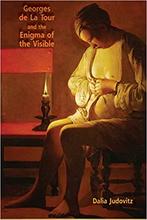
Georges de La Tour and the Enigma of the Visible by Dalia Judovitz
Buy now on Amazon

Contributor
Guess which Disney Princess hid Magdalen with the Smoking Flame in her treasure trove!
Someone obviously needed some alone time to contemplate her “to be or not to be,” though it’s highly unlikely that it’s poor Yorick’s. The skull represents a play on words, representing Golgotha, the place of crucifixion as well as the Aramaic word for skull. This theatrical portrayal of Mary Magdalen by Georges de la Tour is his most famous and shouldn't be confused with his similar painting in the Louvre .
During this time period in European art, Catholic countries were prolific in their images of Magdalen. They were trying to portray that even a “whore” can repent and find God , and peace, and religion, etc etc. Most of the time she was portrayed as an younger woman (because old isn’t sexy) but La Tour decided that her shoulders and knees should be bare, which means she’s living poorly but also still sexy. It’s like our obsession with reality TV stars; Magdalen would definitely occupy a tabloid headline weekly back in the day. The Kardashian sisters wouldn't know what hit 'em!
It highly resembles de la Tour’s other Magdalen work, Penitent Magdalene , but she’s a little more covered and there is a mirror instead of books. Maybe someone wanted a sexier version of Jesus’s main squeeze. Is it just me or does she look a little round in the belly area? Pregnant maybe? Just another church cover up if you ask Dan Brown.
La Tour flatters Magdalen in a way many artists wouldn’t. Surrounding her with symbolic elements and all that jazz. But really he’s trying to say is “We are all sinners!”
For Disney lovers or haters, Ariel, the Little Mermaid , has this painting in her treasure trove under da sea! Maybe Mary Magdalen, like Ariel, is just pondering if fire burns, or maybe one of the background artists was a religious nut and thought Ariel was just some watery tart, if you know what I mean.
The Magdalen with the Smoking Flame is mentioned on our blog -

- University Libraries
- Find Materials
- Using the Libraries
- Research Help
- Libraries & Collections
- Ask A Librarian
- Digital Collections
Mary Magdalen With the Smoking Flame

Description
Contributor, date created, date modified, spatial coverage.
Pardon our dust while we build a better museum ! We are open with a series of special exhibitions . During construction, much of our permanent collection is off view.
Masterworks | Portland: Georges de La Tour
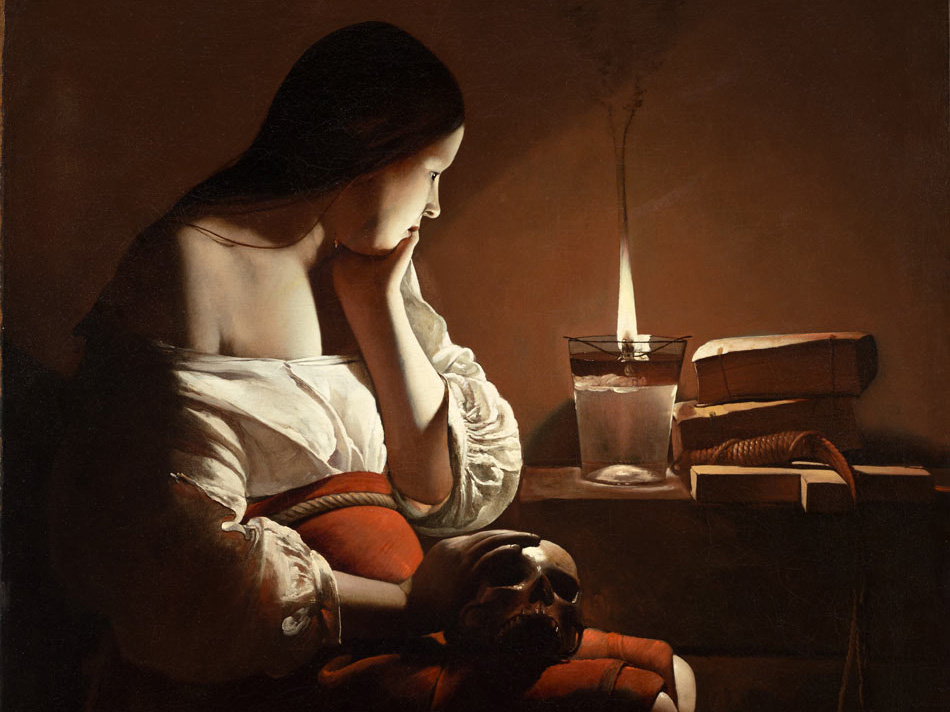
The Portland Art Museum is pleased to present Georges de La Tour’s painting The Magdalen with the Smoking Flame (circa 1635–37), a treasure of the Los Angeles County Museum of Art. The exhibition is the sixth installment of the Museum’s ongoing Masterworks | Portland series, which focuses on individual works of outstanding quality by great artists not represented in the Museum’s collection.
Georges de La Tour (French, 1593-1652) was one of the great painters of light. He mostly specialized in nighttime scenes in which artificial light sources play an active role. These were certainly not new in European art, but La Tour was exceptional for the way he used light to establish mood and to convey the essential qualities of the subject. Typically, the light illuminates only the essential details, and the geometry of his austere compositions endows them with monumentality.
Mary Magdalen—the leading woman among the first followers of Jesus—was the paradigm of the sinner reformed by a life of solitary contemplation and penance. Thus, La Tour’s work very appropriately captures her lost in transcendent state. The mood of concentrated meditation is heightened by the distinct aura of light and especially by the darkened lower part of the composition. Other than the wafting smoke, the scene is profoundly still and quiet.
Focus on an object is a basic principle of meditation, and here the Magdalen is absorbed by the flame of an oil lamp. In this context, it principally symbolizes the light of divine truth in reference to Jesus’ declaration: “I am the light of the world; he that follows me shall not walk in darkness, but shall have the light of life.” (John 8:12). Thus, in La Tour’s painting, the light becomes a naturalistic manifestation of the divine.
La Tour expressed Mary Magdalen’s contemplative state in a striking way. Everyone knows the entrancing quality of flames, and the artist used this to make the Magdalen’s absorption poignant and real to viewers. He skillfully manipulates the light as a foil to the enveloping darkness, not only as an evocation of Jesus’ words, but to draw the spectator into the Magdalen’s state of mind.
Georges de La Tour’s naturalistic style has proven to be very popular with modern audiences. This painting became one of his most famous works thanks to its depiction in Disney’s 1989 animated film The Little Mermaid . During the classic song “Part of Your World,” the young mermaid Ariel joins the Magdalen in gazing at the flame as she sings, “What’s a fire, and why does it—what’s the word?—burn?”
The Magdalen with the Smoking Flame is sure to spark reflection and emotion during its stay in Portland. Do not miss this opportunity for close looking and in-depth understanding of one of the great Old Master paintings in America.
Curated by Dawson Carr, Ph.D., The Janet and Richard Geary Curator of European Art.
Acknowledgements
Mr. and Mrs. William A. Whitsell European and American Art Council of the Portland Art Museum Ann Flowerree Marilyn Podemski and Max Podemski in memory of Evelyn Ross Dee Poth Exhibitions Series Sponsors
Accessibility
- All spaces for this program are accessible by wheelchair. All restrooms have accessible stalls but no power doors.
The Portland Art Museum and Center for an Untold Tomorrow are pleased to offer accommodations to ensure that our programs are accessible and inclusive. We’ll do our best to accommodate your needs when you arrive — please give us 2-3 weeks advance notice for specific requests.
Email requests to [email protected] , or call 503-226-2811.
Structured data
Items portrayed in this file, magdalene with the smoking flame, digital representation of, main subject.
- La Madeleine à la veilleuse, Georges de La Tour (Louvre RF 1949-11)
- Pages with complex technique templates
- PD-Art (Yorck Project)
- Artworks with Wikidata item
- Artworks with accession number from Wikidata
- Artworks with known accession number
- Artworks digital representation of 2D work
- PD-Art (PD-old-100)
- PD-Art (PD-old-70)
- Yorck Project paintings missing described by source
- Images with annotations
- Files with no machine-readable author
Navigation menu
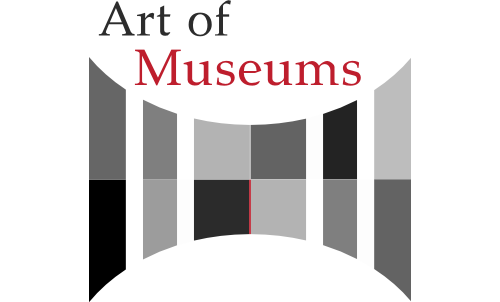
- Alban, Vicente
- Alma-Tadema, Laura Theresa
- Amans, Jacques Guillaume Lucien
- Bazille, Frederic
- Beaux, Cecilia
- Bellows, George Wesley
- Bierstadt, Albert
- Bingham, George Caleb
- Binoit, Peter
- Bosschaert, Ambrosius
- Bouguereau, William Adolphe
- Bronzino (Agnolo di Cosimo di Mariano)
- Brown, Ford Madox
- Bunce, Kate Elizabeth
- Buonarroti, Michelangelo
- Burne-Jones, Sir Edward
- Cabrera (attributed to), Miguel
- Caccia, Orsola Maddalena
- Carriera, Rosalba
- Cassatt, Mary
- Cezanne, Paul
- Chase, William Merritt
- Cheret, Jules
- Church, Frederic Edwin
- Cleeve, Joos van
- Cole, Thomas
- Corot, Camille
- Cort, Cornelis
- Courbet, Gustave
- Cropsey, Jasper Francis
- Curtis, Edward Sheriff
- da Vinci, Leonardo
- Dasburg, Andrew
- de Arellano, Antonio
- de La Tour, Georges
- de Torres, Antonio
- DeBylandt, Alfred E.A.
- Degas, Edgar
- Demuth, Charles
- Dente, Marco
- Dewing, Thomas Wilmer
- Dove, Arthur Garfield
- Duncanson, Robert S.
- Durer, Albrecht
- Eakins,Thomas
- Fantin-Latour, Henri
- Figari, Pedro
- Garzoni, Giovanna
- Gauguin, Paul
- Gentileschi, Artemisia
- Gentileschi, Orazio
- Godward, John William
- Goya (Francisco Goya y Lucientes)
- Goyo, Hashiguchi
- Gutierrez, Felipe Santiago
- Hale, Phillip Leslie
- Hammershøi, Vilhelm
- Haravi, Mir Ali
- Harris, Lawren S.
- Hartley, Marsden
- Hassam, Childe
- Hasui, Kawase
- Heade, Martin Johnson
- Henri, Robert
- Hiroshige, Ichiryusai
- Holguin, Melchor Perez
- Homer, Winslow
- Hopper, Edward
- Huber, Jakob Wilhelm
- Hughes, Arthur
- Ingres, Jean-Auguste Dominique
- Inness, George
- Ipsen, Ernest Lugwig
- Johnson, Eastman
- Johnson, Malvin Gray
- Juarez, Nicolas Rodriguez
- Kensett, John Frederick
- Knight, Louis Aston
- Koka (Toyonari), Yamamura
- Lange, Dorothea
- Lawrence, Sir Thomas
- Manet, Edouard
- Mantegna, Andrea
- Master of the Female Half-Lengths
- Melendez, Luis
- Metcalf, Willard Leroy
- Meteyard, Sidney Harold
- Meyer, Emile
- Miller, Samuel
- Modigliani, Amedeo
- Monet, Claude
- Moran, Thomas
- Mucha, Alphonse Marie
- Nadar (Gaspard-Felix Tournachon)
- Parker, George A
- Parrish, Maxfield
- Paxton, William McGregor
- Peto, John Frederick
- Pissarro, Camille
- Pratt, Henry Cheever
- Ravenel Huger Smith, Alice
- Redmond, Granville
- Redon, Odilon
- Reid, Robert
- Rembrandt (Rembrandt van Rijn)
- Renoir, Auguste
- Roesen, Severin
- Rossetti, Dante Gabriel
- Rousseau, Henri
- Ryder, Albert Pinkham
- Sandys, Frederick
- Sargent, John Singer
- Schamberg, Morton Livingston
- Schiele, Egon
- Shinshui, Ito
- Shunsen, Natori
- Snowman, Isaac
- Solomon, Simeon
- Steinlen, Theophile-Alexandre
- Stella, Joseph
- Tanner, Henry Ossawa
- Tarbell, Edmund Charles
- Tiffany, Louis Comfort
- Tiffany Glass & Decorating Company
- Toulouse-Lautrec, Henri de
- Trumbull, John
- Unknown (Peruvian Cuzco School)
- Unknown (Peruvian southern Andes)
- van der Weyden, Rogier
- Van Eyck, Jan
- Van Gogh, Vincent
- Van Huysum, Jan
- van Ruisdael, Jacob
- Van Walscapelle, Jacob
- Verner, Elizabeth O'Neill
- Vonnoh, Robert
- Vuillard, Edouard
- Whistler, James McNeill
- Waltman, Harry Franklin
- Art Gallery of Hamilton
- Art Institute of Chicago
- Birmingham Museums and Art Gallery
- Brooklyn Museum
- Butler Institute of American Art
- Cleveland Museum of Art
- Colby College Museum of Art
- Cooper Hewitt, Smithsonian Design Museum
- Currier Museum of Art
- Dallas Museum of Art
- Davis Museum at Wellesley College
- Gibbes Museum of Art
- Graphische Sammlung Albertina, Vienna
- Hartford Public Library
- High Museum of Art
- Hirshhorn Museum and Sculpture Garden
- Indianapolis Museum of Art
Los Angeles County Museum of Art
- The J. Paul Getty Museum
- The Kasten Collection
- The Metropolitan Museum of Art
- Minneapolis Institute of Art
- Mount Holyoke College Art Museum
- Museé Carnavalet Histoire de Paris
- National Gallery of Art
- New Orleans Museum of Art
- Philadelphia Museum of Art
- Portland Museum of Art
- Smithsonian American Art Museum
- Teylers Museum
- Toledo Museum of Art
- Vancouver Art Gallery
- Vilcek Foundation
- Wadsworth Atheneum
- Yale University Art Gallery
- Albrecht Dürer and Master Prints
- Alphonse Mucha: Master of Art Nouveau
- Art and Imagination in Spanish America, 1500-1800: Highlights from LACMA's Collection
- Bouguereau & America at San Diego Museum of Art
- Destinations in Paintings: The Kasten Collection
- Edgar Degas: The Private Impressionist
- Glackens and Renoir: Affinities and Distinctions
- In Bloom: Painting Flowers in the Age of Impressionism at Denver Art Museum
- Joseph Stella: Visionary Nature
- Michelangelo: Mind of the Master at The Cleveland Museum of Art
- Mount Washington: The Crown of New England
- Myth and Faith in Renaissance Florence
- Picturesque and Sublime: Thomas Cole’s Trans-Atlantic Inheritance
- Seven Masters: 20th Century Japanese Woodblock Prints from the Wells Collection at Minneapolis Institute of Art
- The Idea of North: The Paintings of Lawren Harris
- Thomas Cole: The Artist as Architect
- Thomas Cole’s Refrain: The Paintings of Catskill Creek
- Thomas Cole's Studio: Memory and Inspiration at the Thomas Cole National Historic Site
- Victorian Radicals: From the Pre-Raphaelites to the Arts & Crafts Movement
- Whistler to Cassatt: American Painters in France
- Wild Spaces,Open Seasons: Hunting and Fishing in American Art
- William Merritt Chase at Museum of Fine Arts, Boston
- William McGregor Paxton and Elizabeth Okie Paxton: An Artistic Partnership
- Architecture
- Contemporary
- Hudson River School
- Impressionism
- Latin American
- Photography
- Post-Impressionism
- Pre-Raphaelite
- Prints and Drawings
- Renaissance
- Seascapes and Maritime

The Magdalen with the Smoking Flame
LACM0010GTOUR14x11
Georges de La Tour
Collections: Baroque , European , Figurative , Georges de La Tour , Los Angeles County Museum of Art , Religious
Category: Baroque , books , cross , European , figurative , flame , Georges de La Tour , Los Angeles County Museum of Art , Mary Magdalen , oil lamp , religious , rope , skull , smoke , woman
Type: Print
Related Items
Adam and eve.
Artist: Albrecht Durer:1504Engraving, Meder, no. 1sheet (trimmed to plate mark) 9 13/16 x 7 5/8...
View full product details
Adoration of the Magi
Artist: Andrea Mantegna:about 1495-1505Distemper on linen19 1/8 x 25 13/16 in.48.6 x 65.6 cmThe J....
Esther before Ahasuerus
Artist: Artemisia Gentileschi : 1628-30Oil on canvas82 x 107 3/4 in.208.3 x 273.7cmThe Metropolitan Museum...
Flowering Tree
Artist: Unknown : ca. 1700Opaque watercolor and gold on paper10 3/16 x 7 in.25.9 x...
Sign Up for our Newsletter
Subscribe to our newsletter and always be the first to hear about what is happening.
- Copyright Information
- Our Product
- Ordering Information
- Return Policy
© 2024 Art of Museums, LLC . Powered by Shopify

IMAGES
VIDEO
COMMENTS
Magdalene with the Smoking Flame (also titled in French La Madeleine à la veilleuse, and La Madeleine à la flamme filante) is a c. 1640 oil-on-canvas depiction of Mary Magdalene by French Baroque painter Georges de La Tour.Two versions of this painting exist, one in the Los Angeles County Museum of Art and the other in the Louvre Museum (La Madeleine a la veilleuse).
February 28, 2021. by Kelly Bagdanov. Georges de La Tour's, Magdalene with the Smoking Flame, is a French Baroque work that envisions Mary Magdalene in a state of deep contemplation. With clarity of form, and a limited color palette, De La Tour creates a forceful work that captures this quiet moment. In this post we will explore the composite ...
This painting, also known as the Magdalen with Two Flames, is one of several versions of the subject by La Tour.Others include the Repentant Magdalen (National Gallery of Art, Washington); the Magdalen with a Lamp (Musée du Louvre, Paris); and the Magdalen with the Smoking Flame (Los Angeles County Museum of Art). A fifth composition, the Magdalen Reading, was sold at auction in 1981 (Maître ...
Georges de la Tour, The Magdalen with the Smoking Flame, c. 1638-40, Los Angeles County Museum of Art, ... In this painting by Georges de la Tour, the state of mind and heart of the Biblical figure Mary Magdalene is emphasized over the context of time and place. This is a departure from typical depictions of Magdalene, which show her as not ...
The Magdalen with the Smoking Flame, Georges de La Tour (France, Vic-sur-Seille, 1593-1652), circa 1635-37, Paintings, Oil on canvas, Although Georges de La Tour spent his entire artistic career in provincial France, far from cosmopolitan centers and artistic influences, he developed a poignant style as profound as the most illustrious painters of his day.
Art is too important not to teach.Teach Art History with resources from kellybagdanov.comhttps://[email protected] the Blog Po...
117 cm 91.7 cm. The Magdalene with the Smoking Flame is a Baroque Oil on Canvas Painting created by Georges de La Tour from 1638 to 1640. It lives at the Los Angeles County Museum of Art in the United States. The image is in the Public Domain, and tagged Mary Magdalene, Skulls and Chiaroscuro Artwork. Source Download See The Magdalene with the ...
Georges de La Tour's painting is a consummation devoutly to be wish'd. ... instead of showing the penitent Mary Magdalene as an old ... The Magdalen with the Smoking Flame, c. 1635-1637Georges ...
The scene depicted in Magdalene with the Smoking Flame by Georges de La Tour is set inside a dark and simple room. Mary Magdalene is sitting in front of a desk, with long hair and absorbed in her thoughts. Her right hand is placed on a skull, her feet are bare and the white shirt leaves her shoulders naked, while the light comes from a lamp and ...
The Magdalen with the Smoking Flame. Home / Museum / Search ARC Museum / Georges de La Tour (1593-1652) View. Buy a print. Image Details. 814 x 584 pixels less than 1 MP. 125 Kilobytes. Previous.
In this case, the work is a 17th-Century French painting: Georges de la Tour's "The Magdalene With the Smoking Flame," inarguably among LACMA's finest and most moving images.
Magdalene at a Mirror. Magdalene at a Mirror or The Repentant Magdalene is a c.1635-1640 oil-on-canvas painting by the French artist Georges de La Tour. It passed from the Marquise de Caulaincourt to the Comtesse d'Andigné in 1911, before being bought in 1936 by André Fabius - it is sometimes known as The Fabius Magdalene as a result. [1]
Oil on canvas Frame: 57 × 47 1/2 × 4 in. (144.78 × 120.65 × 10.16 cm) Canvas: 46 1/16 × 36 1/8 in. (117 × 91.76 cm) Museum: Los Angeles County Museum of Art Gift of The Ahmanson Foundation. Magdalen with the Smoking Flame is an artwork on USEUM. It was created by Georges de La Tour in 1640. Log in to USEUM to download unlimited free images, send e-cards and interact with thousands of ...
Summary of Georges de La Tour. One of the greatest exponents of 17 th century Baroque painting, La Tour's mastery of chiaroscuro was such that he is often named as Caravaggio's natural successor. But La Tour's paintings, although relatively small in number, stand on their own terms for an economy of styling that charge his brooding candlelit scenes with a sense of enigmatic tranquility.
From Los Angeles County Museum of Art, Georges de La Tour, Mary Magdalen with the Smoking Flame (ca. 1640), Oil on canvas, 46 1/4 × 36 1/8 in
File: Georges de La Tour - The Magdalen with the Smoking Flame - Google Art Project.jpg
Photograph. Description Georges de La Tour - Magdalen of Night Light - WGA12337.jpg. English: Magdalene with the Smoking Flame (c. 1640), by Georges de La Tour. Oil on canvas, 128 × 94 cm (50 × 37 in). Louvre, Paris. Source. Web Gallery of Art: Image Info about artwork.
It's like our obsession with reality TV stars; Magdalen would definitely occupy a tabloid headline weekly back in the day. The Kardashian sisters wouldn't know what hit 'em! It highly resembles de la Tour's other Magdalen work, Penitent Magdalene, but she's a little more covered and there is a mirror instead of books. Maybe someone wanted ...
Mary Magdalen With the Smoking Flame; ... Title. Mary Magdalen With the Smoking Flame. Description. Gift of the Ahmanson Foundation (M. 77.73). Creator. Georges de La Tour. Source. Stokstad, Marilyn. Art History, 4th ed., Upper Saddle River, N. J.: Pearson Education, 2010 (9780205800377) ... Georges de La Tour, "Mary Magdalen With the Smoking ...
Georges de La Tour (French, 1593-1652). The Magdalen with the Smoking Flame, ca. 1635-37. Oil on canvas. Los Angeles County Museum of Art: Gift of The Ahmanson Foundation, M.77.73.
Magdalene with the Smoking Flame (c. 1640), by Georges de La Tour. Oil on canvas, 128 x 94 cm (50.3 x 37 in). Louvre, Paris
Artist: Georges de La Tour Details: circa 1635-37Oil on canvas46 1/16 x 36 1/8 in.117 x 91.76 cmLos Angeles County Museum of ArtGift of the Ahmanson FoundationM.77.73Courtesy of Los Angeles County Museum of Art